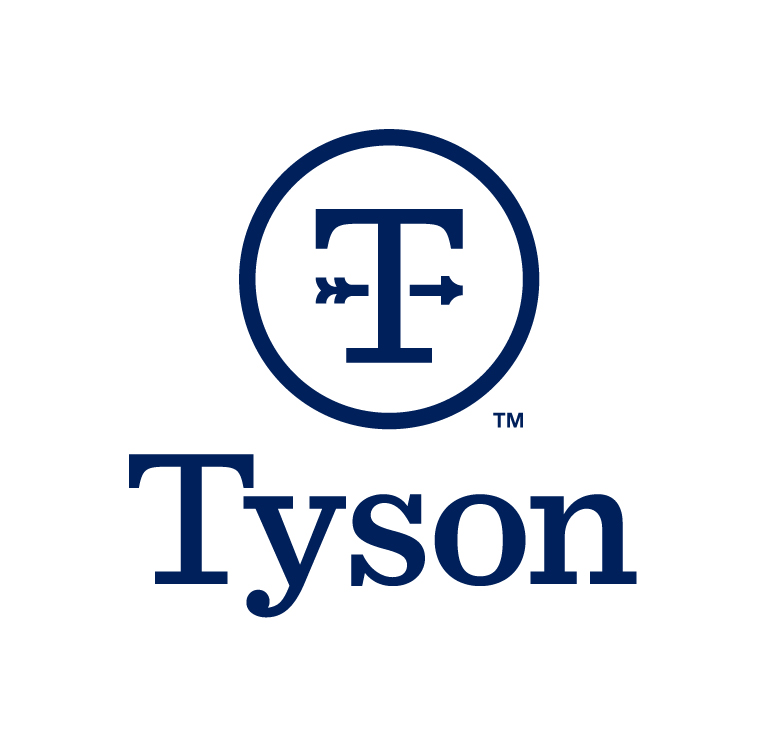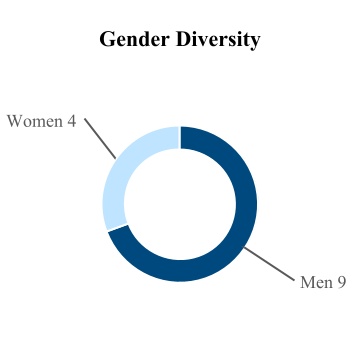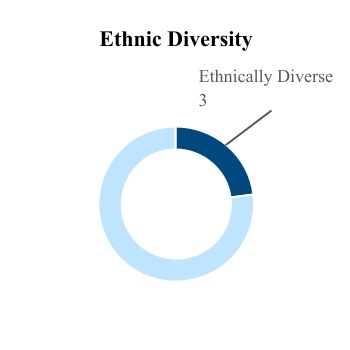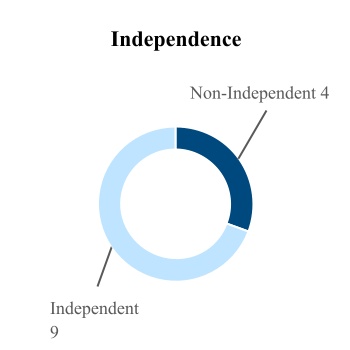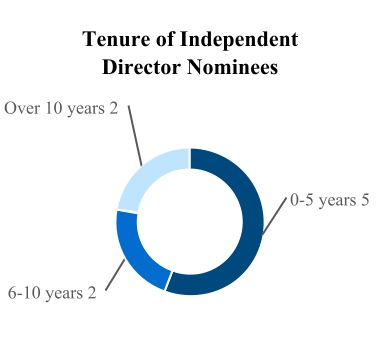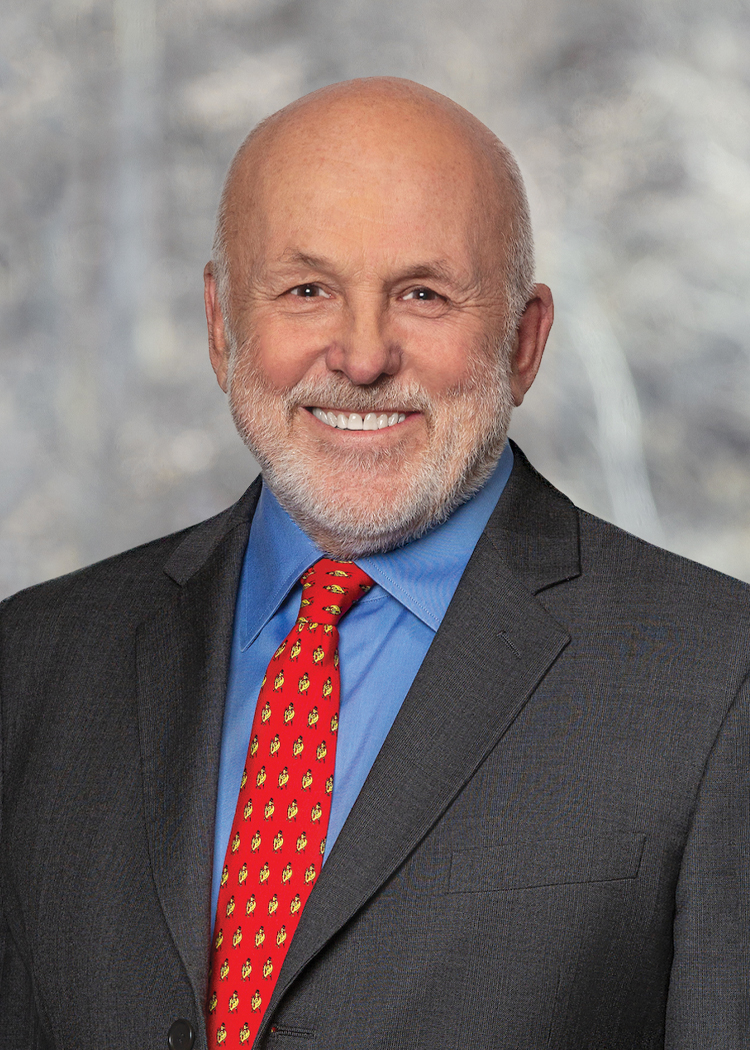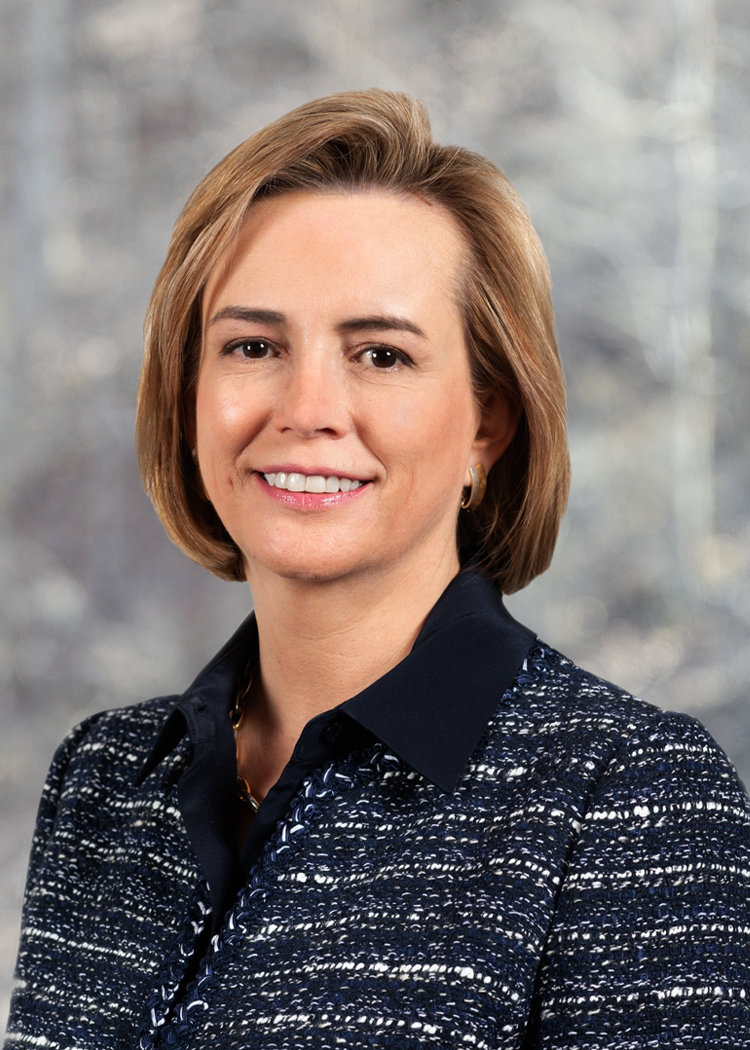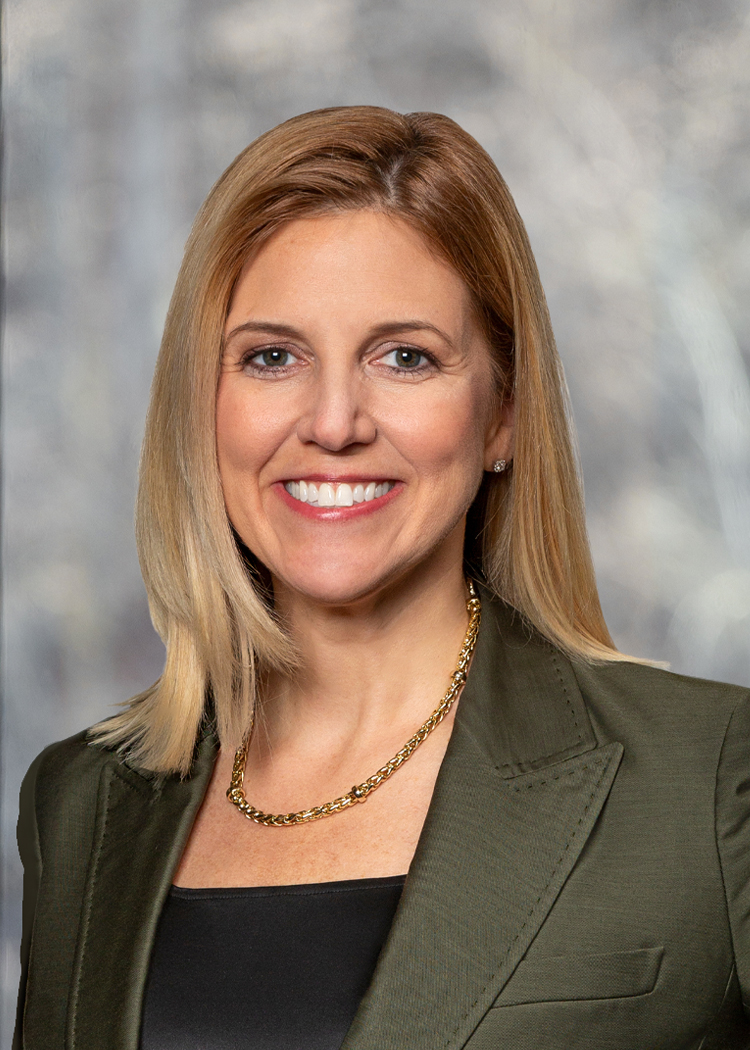The Board recommends that shareholders vote AGAINST this shareholder proposal. TheWe share the proponent’s commitment to environmental sustainability and recognize the need for efforts aimed at reducing plastic and packaging waste. We are committed to undertaking such efforts and have been and will continue to work towards innovations in sustainable packaging. Given our current practices and disclosures, the Board believes that the proposal’s requested report would not provide material benefits or additional disclosure not already available to shareholders, and, therefore, this proposal is not in the best interests of the Company or its shareholders.
A CONTRARY VOTE.
Approval of this shareholder proposal requires the affirmative vote of a majority of the votes cast at the Annual Meeting, with the holders of shares of Class A Common Stock and Class B Common Stock voting together as a single class.
SHAREHOLDER PROPOSAL REGARDING HUMAN RIGHTS REPORT
Report on Human Rights Due Diligence
2019 - Tyson Foods
Whereas: Corporations have a responsibility to respect human rights within company-owned operations and through business relationships under the UN Guiding Principles on Business and Human Rights.1 To meet this responsibility, companies are expected to conduct human rights due diligence, informed by the core international human rights instruments, to assess, identify, prevent, and mitigate adverse human rights impacts.2
Industrial meat production exposes workers, farmers, and communities to actual and potential adverse human rights impacts. Inadequate regulatory frameworks do not sufficiently protect against these impacts. Poultry processing workers face serious labor rights violations, including injuries from unsafe line speeds and other hazards, exposure to toxins, wage and hour violations, sexual harassment, and workplace discrimination. Factory farming contributes to economic struggles for contract growers and family farmers, exploitation of migrant farmworkers, and occupational health and safety risks. Monoculture farming to grow animal feed requires heavy use of chemical fertilizers and pesticides, impacting human health, soil and water quality, and biodiversity. An estimated 99% of U.S. farm animals are raised in confined animal feeding operations (CAFOs), which release high levels of toxic pollutants from animal waste into the water and air.
Tyson faces community resistance to the expansion of its operations and footprint to meet growing demand for protein. In 2017, community protests in Kansas prevented construction of a new poultry processing plant, citing concerns about Tyson’s history of water pollution incidents and inadequate community consultation.3 A proactive assessment of Tyson’s salient human rights risks, informed by meaningful stakeholder consultation, would mitigate adverse human rights impacts and threats to the company’s social license to operate and business opportunities.
While Tyson commits to respect human rights in its Code of Conduct and Supplier Code, adoption of principles is only the first step in effectively managing human rights risks. Tyson committed to improve working conditions in 2017, but does not comprehensively report on implementation, monitoring efforts, or improvements in workers’ ability to exercise their rights.4 Tyson’s sustainability initiatives, which include a Social Baseline Study and land stewardship target, do not address all of Tyson’s human rights impacts or cover the entire value chain. Tyson has yet to disclose progress towards implementing these efforts, or how they will be factored into business decisions, growth, and supplier expectations, to ensure they are embedded throughout the business.
Resolved: Shareholders request the Board of Directors prepare a report, at reasonable cost and omitting proprietary information, on Tyson’s human rights due diligence process to assess, identify, prevent and mitigate actual and potential human rights impacts.
Supporting Statement: The report should:
Include the human rights principles used to frame its risk assessments;
Outline the human rights impacts of Tyson’s business activities, including company-owned operations, contract growers, and supply chain and plans to mitigate them;
Explain the types and extent of stakeholder consultation; and
Address Tyson’s plans to track effectiveness of measures to assess, prevent, mitigate, and remedy adverse human rights impacts.
_____________________
1https://www.ohchr.org/Documents/Publications/GuidingPrinciplesBusinessHR_EN.pdf
2https://www.ohchr.org/en/professionalinterest/pages/coreinstruments.aspx; https://www.ilo.org/declaration/lang--en/index.htm; http://www.oecd.org/investment/mne/1922428.pdf
3http://nototyson.com/
4https://www.tysonfoods.com/sites/default/files/2018-03/Commmitments%20for%20Continuous%20Improvement%20in%20the%20Workplace.pdf
Board of Directors’ Statement
In Opposition to Shareholder Proposal Regarding Human Rights Report
The Board recommends that shareholders vote AGAINST this shareholder proposal. The Board believes that this proposal is not in the best interests of the Company or its shareholders and opposes it for the following reasons.
Contrary to the implications raised in the proposal, the Company greatly values the health and safety of its team members and is focused on maintaining a safety culture with the goal of eliminating workplace incidents, risks and hazards. We are committed to making a positive impact in the communities in which we operate around the world by conducting business in a sustainable and ethical manner, and we support the principles contained within the United Nation’s Universal Declaration of Human Rights and the International Labor Organization Labor Standards.
The focus of the proposal appears to be on ensuring the Company adopts and implements suitable efforts to respect the human rights of the Company’s team members and the communities in which we operate. The Board agrees with the proponent on the importance of conducting human rights due diligence and the Company is strongly committed to promoting social responsibility and human rights in every area of our operations throughout the world. The Board believes the Company’s present policies and practices appropriately and adequately address the concerns raised in the proposal and a separate human rights report is not an effective way for the Company to “assess, identify, prevent and mitigate actual and potential human rights impacts.”
Our human rights practices are grounded in our Code of Conduct, Core Values, and Team Member Promise, which outline the many rights, benefits, and responsibilities enjoyed by and expected of team members. As mentioned by the proposal, our Code of Conduct requires us to commit to upholding the principles of human rights. Pursuant to our Code of Conduct, we do not tolerate child or forced labor in any of our operations or facilities, we strive to comply with all applicable wage and hour laws, and we respect our employees’ rights to join or not join a trade union or to have recognized employee representation in accordance with local law. The Code of Conduct is publicly available to all shareholders on our website at ir.tyson.com under “Corporate Governance”. Our Core Values - which define who we are, what we do, and how we do it - are the foundation of corporate sustainability at Tyson Foods and recognize that we strive to provide a safe work environment for our team members. Finally, our Team Member Promise is a commitment to making sure our team members have the tools, resources and support necessary to meet their responsibilities, be successful, and achieve their goals.
We already engage in a number of additional practices that make the report requested by the proponent unnecessary. We maintain a social compliance audit program for our facilities. As part of that program, an independent third-party audits approximately twenty-five percent of our production facilities each year using Workplace Conditions Assessment criteria to verify our adherence to the four pillars of social compliance standards regarding labor, health and safety, environment, and business integrity. The results of those audits are published in our annual sustainability report. Additionally, we recently joined the United Nations Global Compact, which requires us to produce an annual report that reiterates our commitment to the global compact and how we are upholding our commitment to its principles, including those related to human rights. Finally, we utilize an independent third-party to maintain an “Ethics Help Line” through both a toll-free phone number and a web-based reporting mechanism for team members to anonymously report suspected violations of our Code of Conduct or the law. The Ethics Help Line gives us insight into how our Code of Conduct is being implemented across our organization and the number of Ethics Help Line contacts and general areas of complaint are published in our annual sustainability report.
In our supply chain, we depend on independent farmers to supply our plants with chicken, beef, pork, and turkey. We strive to support farmers in their efforts to run their businesses wisely and to be independent and sustainable enterprises.While we do not have responsibility for the day-to-day management of these operations, we do require that farmers comply with all local, state, and federal regulations applicable to their operations.
In 2010, we implemented a Supplier Code of Conduct that sets forth the principles and high ethical standards that we strive to achieve and expect our supply partners to try to work toward throughout the course of our business relationship. These principles and ethical standards include, among other things, a dedication to observing fair labor practices and having controls in place that: verify the employment eligibility of their employees; respect the right of employees to freely associate; ensure compliance with applicable wage and hour laws; and prohibit discrimination, forced labor, and child labor. We fully expect our supply partners to demonstrate a strong commitment to ethical behavior and to operate in a manner that strives to responsibly manage the impacts of their operations on their workers.
Lastly, we are committed to our role as a steward of the environment in the areas where we do business. We have committed to support improved environmental practices on two million acres of corn production by the end of 2020, which we believe is the largest-ever land stewardship commitment by a U.S. based protein company. In furtherance of our announced goal of reducing greenhouse gas emissions thirty percent by 2030, we expect this will lower the greenhouse gas emissions generated by our supply chain by reducing the amount of fertilizer applied per acre of corn production and thereby reducing total nitrous oxide emissions.
In light of our current policies and continuous efforts to protect human rights throughout our operations, the preparation of an additional report as requested by this shareholder proposal is unnecessary and not in our shareholders’ best interest. Accordingly, the Board recommends that shareholders vote AGAINST this shareholder proposal.
Board Recommendation
THE BOARD OF DIRECTORS OF THE COMPANY RECOMMENDS THAT THE SHAREHOLDERS VOTE “AGAINST” THIS SHAREHOLDER PROPOSAL.
PROXIES SOLICITED BY THE BOARD OF DIRECTORS WILL BE VOTED
“AGAINST” THIS SHAREHOLDER PROPOSAL UNLESS SHAREHOLDERS SPECIFY
A CONTRARY VOTE.
Vote Required
Approval of this shareholder proposal requires the affirmative vote of a majority of the votes cast at the Annual Meeting, with the holders of shares of Class A Common Stock and Class B Common Stock voting together as a single class.
COMPENSATION DISCUSSION AND ANALYSIS
Introduction
This Compensation Discussion and Analysis provides information regardingexplains the Company’s philosophy and program for compensating its executive officers, as well as the compensation paid to our Chairman, ourits NEOs for fiscal year 2018 Chief Executive Officer, our current Chief Financial Officer, certain other executive officers who were the most highly compensated in2021. During fiscal year 2018 and our former Chief Financial Officer. These individuals, referred to as “named executive officers” or “NEOs,” are identified below along with their offices held during fiscal year 2018:2021, the Company’s NEOs were:
•John H. Tyson, Chairman of the Board (“Chairman”)
Tom Hayes,•Donnie King, President and Chief Executive Officer (“CEO”) (through September 30, 2018)
•Stewart T. Glendinning, Executive Vice President and Chief Financial Officer (“CFO”
•Chris Langholz, President International
•Amy Tu, Executive Vice President, Chief Legal Officer and Secretary,
Global Governance and Corporate Affairs
•Dean Banks, Former President and Chief Executive Officer
Fiscal Year 2021 Financial Performance Highlights
During fiscal year 2021, the Company continued to take actions to strengthen the Company’s operations and create long-term value for shareholders, and experienced strong year-over-year growth in the following key financial and operational benchmarks:
•Total sales in fiscal year 2021 were $47.0 billion as compared to $43.2 billion in fiscal year 2020.
•Operating income for fiscal year 2021 was $4.4 billion as compared to $3.0 billion for fiscal year 2020.
•Earnings per share increased 47.9% to $8.34 for fiscal year 2021 as compared to $5.64 for fiscal year 2020.
•Total operating margin was 9.3% for fiscal year 2021 as compared to 7.0% for fiscal year 2020.
In addition, in fiscal year 2021, the Company generated $3.8 billion of operating cash flows, reduced total debt by approximately $2.0 billion and closed the sale of its pet treats business for $1.2 billion. The Company also increased dividends on its common stock by 6% over fiscal year 2020 dividends.
This strong performance was reflected in our fiscal year 2021 pay outcomes, as all of our NEOs received annual cash incentive awards above their respective target amounts. These fiscal year 2021 pay outcomes for our NEOs were consistent with the Company’s pay-for-performance philosophy described in more detail below.
Fiscal Year 2021 Actions by the Compensation and Leadership Development Committee
Compensation Decisions in Response to COVID-19
Throughout the pandemic, the Compensation and Leadership Development Committee regularly discussed how best to balance and fairly recognize the achievements of our ELT (which includes all of our NEOs other than the Chairman) and the Chairman to successfully navigate the Company through the pandemic and into the future while at the same time taking into account the adverse impact of the pandemic on our business. Based on input from Korn Ferry, the Company’s compensation consultant, and with the Compensation and Leadership Development Committee’s compensation philosophy and objectives in mind (as discussed below), in November 2020 the Compensation and Leadership Development Committee determined to make an additional award of restricted stock units (the “Additional RSU Award”) (effectiveto the participants of the Executive Incentive Plan, including the NEOs, equal in value to the decreased payout under the Executive Incentive Plan from the impact of the direct incremental expenses related to COVID-19 in fiscal year 2020. The Additional RSU Award will vest 50% over each of the following two years, adding a retention element to the grant. The Compensation and Leadership Development Committee determined that the Additional RSU Award was appropriate based on improved performance trends in the second half of fiscal year 2020, the leadership demonstrated by the participants in the Executive Incentive Plan in the face of the ongoing COVID-19 pandemic, and the tremendous efforts to safeguard our team members during the crisis. See the section titled “Elements of Compensation—Additional RSU Award” in this Proxy Statement for details describing leadership accomplishments recognized by the Compensation and Leadership Development Committee.
Adoption of Annual Incentive Compensation Design Changes to Recognize “People Goals”
Recognizing the importance of our team members, in 2021 the Compensation and Leadership Development Committee adopted an Annual Incentive Award modifier for all ELT members that is subject to a performance objective intended to (1) promote diversity, equity and inclusion, (2) improve the health and safety of team members and (3) focus our efforts on talent development. The People Goals apply a modifier of plus or minus 5% of target performance incentive payments based on demonstrated measurable progress
towards achieving each of these three objectives for a total possible impact of plus or minus 15% of target performance incentive payments. A positive modifier applies if we achieve or exceed these goals, and a negative modifier applies if we maintain status quo or see a decrease in these measured goals, as more fully described in the section titled “Elements of Compensation—Annual Incentive Payments” in this Proxy Statement.
Adoption of Clawback Policy
As discussed in greater detail in the subsection titled “Clawback Policy,” in May 2021, the Compensation and Leadership Development Committee and the Board adopted a Clawback Policy (the “Clawback Policy”), allowing the Company to recoup certain incentive-based compensation in the event of a financial restatement of our financial statements or specific acts of improper conduct (as defined in the Clawback Policy). Pursuant to the Clawback Policy, any performance-based compensation granted on or after October 3, 2021, including stock incentive plan compensation and annual incentive plan compensation, is subject to recoupment in the event of a financial restatement (with certain exceptions as set forth in the Clawback Policy) or the employee engaging in fraud, willful misconduct or certain other acts that causes reputational or financial harm to the Company, as described in the Clawback Policy.
Executive Transitions
Appointment of Dean Banks as President and Chief Executive Officer
On October 3, 2020, as a result of the retirement of former Chief Executive Officer, Noel White, Mr. Banks was appointed President and Chief Executive Officer. Prior to the appointment, Mr. Banks served as President of the Company since December 2019. Upon his retirement, Mr. White was appointed Executive Vice Chairman of the Board (the “Executive Vice Chairman”) but was not an executive officer of the Company for fiscal year 2021.
Appointment of Donnie King as Chief Operating Officer
On February 10, 2018)
Sally Grimes,21, 2021, the Company appointed Mr. King to the newly created position of Chief Operating Officer where he would report directly to Mr. Banks, the Company’s then-President and Chief Executive Officer. Mr. King continued to serve as Group President Prepared Foods
Noel White,Poultry. As a result of the appointment, the Group PresidentPresidents of the Company’s Fresh Meats and Prepared Foods business segments, as well as the Company’s President International (throughand the Company’s Chief Customer Officer, would report directly to Mr. King. Mr. King had previously retired from the Company in 2017 and rejoined the Company as Group President International on January 22, 2019. He then assumed the role of Chief Administration Officer on February 24, 2019 and became Group President Poultry on September 30, 2018)8, 2020. In connection with his appointment, Mr. King was granted restricted stock in the amount of $214,000 to revise his annual target total compensation to compensate him for his additional duties.
Dennis Leatherby, Former Executive ViceAppointment of Donnie King as President and Chief FinancialExecutive Officer; Departure of Dean Banks
On June 1, 2021, the Company appointed Mr. King as the Company’s President and Chief Executive Officer, (through February 10, 2018)effective as of June 2, 2021. Mr. King succeeded Mr. Banks, who had served as the Company’s President and Chief Executive Officer since October 3, 2020.
In September 2018, the Company announced thatconnection with Mr. Hayes would step downKing’s appointment as President and CEO, effective September 30, 2018, and Mr. White would assume that role on such date. In connection with this management change, the Companyhe entered into a separation and release agreement with Mr. Hayes and an amended and restated employment agreement with Mr. White. The terms of each are described further below. For purposes of this Compensation Discussion and Analysis, the term “CEO” refers to Mr. Hayes.
In addition, in November 2017, the Company announced that Mr. Leatherby would step down as Chief Financial Officer, effective February 10, 2018, Mr. Glendinning would assume that role on such date, and following which Mr. Leatherby would remain employed by the Company until April 6, 2018. In connection with this management change, the Company entered into a separation and release agreement with Mr. Leatherby and an employment agreement with the Company on June 1, 2021, effective as of June 2, 2021, which is described in further detail in the section titled “Employment Contracts and Executive Severance Plan—Donnie King” in this Proxy Statement. Korn Ferry provided input to Management and the Compensation and Leadership Development Committee on Mr. Glendinning. The termsKing’s employment agreement. Furthermore, as also described in the section titled “Employment Contracts and Executive Severance Plan—Donnie King” in this Proxy Statement, in June 2021, in connection with his promotion to the role of each are described further below. For purposesPresident and CEO, Mr. King received additional stock awards consisting of non-qualified stock options and restricted stock in recognition of the added responsibilities of his new role. In connection with Mr. Banks’ separation from the Company, his employment contract with the Company terminated effective as of June 2, 2021 and he received payments consistent with a termination without cause under such employment contract, as discussed in the section titled “Executive Compensation— Potential Payments Upon Termination—Separation of Dean Banks” in this Compensation Discussion and Analysis, the term “CFO” refers to Mr. Glendinning.Proxy Statement.
Compensation Philosophy and Objectives
Our executive compensation programphilosophy is designed to provide a competitive level of compensation necessary to attract, motivate and retain talented and experienced executives and to motivate them to achieve short- and long-term corporate goals that enhance shareholder value. Consistent with this philosophy, the following are the key objectives of our executive compensation program.
Shareholder Alignment. One of the primary objectives of our executive compensation philosophy isWe work to appropriately link executive pay with the Company’s financial performance and the creation of shareholder value. We believe that linking executive compensation to corporate performance results in a better alignment of compensation with corporate goals and shareholder interests.value creation.
Attract, Motivate and Retain Key Employees. Our executive compensation program is shaped by the competitive market for management talent in the food industry and at other public and private companies. We believeshape our executive compensation shouldto be competitive with the organizations with which we compete for talent. As such, it is our goal to provide compensation at levels (bothtalent in terms of benefits providedthe food industry and amounts paid)with other public and private companies so that we can attract, motivate and retain superior executive talent for the long-term.
Link Pay to Performance. We believe that as an executive’s responsibility increases, a larger portion of his or her total compensation should be “at-risk” incentive compensation (both short-term and long-term), subject to corporate, segment, individual, stock price and/or earnings performance measures. Our compensation program is designed to link pay to performance by makingmake a substantial portion of total executive compensation variable, or “at-risk,” through incentive awards based on Company earnings and performance goals. As performance goals are met or exceeded, executives are rewarded commensurately.
| | | | | | | | | | | | | | |
| Compensation Governance | | | |
| What we do | | | What we don’t do |
| ☑ | Pay-for-performance – Pay outcomes are aligned with performance of the Company. | | ☒ | No employment contracts except for the Chairman, the CEO and the Executive Vice Chairman – Employment contracts are provided only to the Chairman, one member of our ELT (the CEO) and the Executive Vice Chairman. |
| ☑ | Performance measures support strategic objectives – Performance measures used in compensation programs reflect strategic and operating objectives, creating long-term value for shareholders. | | |
| | ☒ | No dividends on unearned shares – Dividends are not paid on performance stock awards during the performance cycle. |
| | |
| | ☒ | No hedging of Company stock – Our officers (including all NEOs) and directors are prohibited from entering into hedging transactions related to our stock. |
| ☑ | Include “double-trigger” change in control provisions in equity awards – In the event of a change in control, acceleration of vesting of long-term incentive awards will not occur unless there is also a qualifying termination of employment upon or within two years following the change in control. | |
| | |
| | ☒ | No pledging of Company stock without prior approval – Our senior officers (including all NEOs) and directors are prohibited from holding our company’s securities in a margin account or pledging our company’s securities as collateral for a loan without prior approval from the Chief Legal Officer or a designee. |
| |
| ☑ | Significant stock ownership guidelines – Our NEOs and other executives are required to accumulate and hold stock equal to a multiple of base salary. | |
| | |
| | ☒ | No repricing of underwater options – Our Stock Incentive Plan prohibits repricing or exchange of underwater stock options without stockholder approval. |
| ☑ | Provide limited perquisites – Perquisites offered to NEOs with sound business rationale. | |
| ☑ | Have a Clawback Policy – The Compensation and Leadership Development Committee can seek repayment of incentive-based compensation in the event of a financial statement restatement or in the event of improper conduct. | | | |
How We Determine Compensation
Determining Performance Measures. The Compensation and Leadership Development Committee sets challenging but realizable performance measures that are fully achieved only as a result of strong performance. As part of our pay-for-performance philosophy, if targets and pre-determined goals are not fully met, payouts may be reduced or not paid. Consistent with the Company’s pay-for-performance philosophy, the Compensation and Leadership Development Committee selects financial performance measures under the annual and stock incentive plans that support the Company’s short- and long-term business plans and strategies and incent management to focus on actions that create sustainable shareholder value. In setting targets for the short- and long-term performance measures, the Compensation and Leadership Development Committee considers the Company’s annual and long-term business goals and strategies and certain other factors, including the Company’s projected operating environment and economic and industry conditions. The Compensation and Leadership Development Committee recognizes that performance goals will change over time to reflect market practices and evolving business priorities. Accordingly, the Compensation and Leadership Development Committee regularly reassesses the performance measures and goals used.
Role of the Compensation and Leadership Development Committee. In general, the Compensation and Leadership Development Committee (the “Compensation Committee”) works with management and external experts to set the Company’s executive compensation philosophy and objectives and to compensate key executives in accordance with such philosophy and objectives.accordingly. More specifically, the Compensation and Leadership Development Committee periodically reviews and approves approves:
•the Company’s stated compensation philosophy, corporate goals and objectives relevant to management compensation and total compensation policy to evaluate whether they support business objectives, create shareholder value, are consistent with shareholder interests, attract, motivate and retain key executive talent and link compensation to corporate performance. The Compensation Committee also annually reviews the composition of performance;
•the peer groupsgroup used for competitive pay/performance benchmarking. Periodicallybenchmarking (see the below subsection titled “Role of Compensation Committee comparesConsultants/Benchmarking” for additional details); and
•the total compensation for our NEOs and other executive officers to relevant external benchmarks. A discussion of the peer groupofficers.
The Compensation and external benchmarks used in establishing compensation is
set forth below under the heading “Role of Compensation Consultants/Benchmarking.” The CompensationLeadership Development Committee’s charter describes additional duties and responsibilities of the Compensation and Leadership Development Committee with respect to the administration, oversight and determination of executive compensation. A copy of the Compensation and Leadership Development Committee’s charter can be found on the Company’s Investor Relations website athttp://ir.tyson.com.
The Compensation and Leadership Development Committee works with the intention thatintends for its decisions willto be consistent with tax regulations, relevantapplicable law and NYSE listing requirements while also ensuring that compensation matters are handled in a manner satisfactory to the Company’s principal shareholder.requirements. Because the Company meets the definition of a “controlled company” under NYSE corporate governance rules, the Compensation and Leadership Development Committee is not required to determine the compensation of our CEO in its sole discretion.CEO. However, the Compensation and Leadership Development Committee has approved the employment contracts and total compensation for the chief executive officerCEO position since 2003.
The Compensation Committee is expressly authorized in its charter to retain outside legal, accounting or other advisors or experts at the Company’s expense. For fiscal year 2018 compensation decisions, the Compensation Committee used general industry and peer group information provided to the Company by Korn Ferry (“Korn Ferry”).
Say on Pay.Say-on-Pay. Approximately 98%98.1% of the votes cast at the 20172020 Annual Meeting of Shareholders on the non-binding advisory vote on the compensation of our named executive officer compensationNamed Executive Officers (commonly referred to as a “say-on-pay” vote) were voted in support of our executive compensation program. Consistent with our shareholders’ approval, the Compensation and Leadership Development Committee continued to apply the same effective principles and philosophy it has used in prior years while also monitoring market trends and best practices to determine executive compensation and will continue to consider shareholder concerns and feedback infeedback. Following the future.say-on-pay vote at the 2020 Annual Meeting of Shareholders, it is expected that the next such vote will be at the Company’s 2023 Annual Meeting of Shareholders.
Executive Officer Compensation Structure. Our executive officers are compensated based on a pay structure (including salary, target annual cash performance incentive, and long-term incentive awards (i.e., equity grants)) determined for their respective roles and job grades within the Company’s job grade structure.responsibilities. The pay structure for an executive is designed to take into accountconsiders the role, scope of responsibilities, capabilities and experience of the executive. An executive officer’s job grade level designation is made
Interaction Between the Compensation and Leadership Development Committee and Management; Role of the CEO in Compensation Decisions. Key employment terms for NEOs other than the Chairman and the CEO are recommended to the Compensation and Leadership Development Committee by the CEO subjectin consultation with the Company’s human resources group. The Compensation and Leadership Development Committee reviews and discusses the proposed compensation terms and will meet with the Company’s human resources group to discuss any questions or issues it has regarding these decisions. Once all questions and issues have been addressed to the satisfaction of the Compensation and Leadership Development Committee, approvals.the Compensation and Leadership Development Committee will approve the compensation terms for each NEO. The Compensation and Leadership Development Committee reviews and discusses pay decisions related to the Chairman and the CEO in executive session, and neither the Chairman nor the CEO is present when the Compensation and Leadership Development Committee discusses and determines their respective compensation.
Our executive compensation structure is periodically reviewed by our human resources group and senior management based on their collective review of information about the Compensation Peer Group (as discusseddefined below) and recommendations provided by the Company’s compensation consultant (Korn Ferry during fiscal year 2018)2021), together with analysis of general market analysistrends and data of executive compensation trends of hundreds ofat large public and private companies (“General Industry Data”). The most recent review was during fiscal year 2018. The General Industry Data, as updated from time to time, is used as the benchmark for the Company’s executive compensation structure because the Compensation Committee believes it serves as a stable representation of national pay levels. The Compensation Committee and the Company’s human resources group periodically review the executive compensation structure and updated market analysis (particularly the compensation practices ofsenior management suggest modifications to the Compensation Peer Group, discussed below) with senior management and suggest modificationsLeadership Development Committee as they deem necessary to ensure that our executive officers and key employees are generally compensated in accordance with our compensation philosophy and objectives. The Compensation and Leadership Development Committee considers the recommendations made by the human resources group and senior management and may also consult the Company’s compensation consultant before approving decisions on executive compensation. For a more detailed discussion regarding decisions with respect to each element and amount of compensation provided for inpaid to the grade structure,NEOs, see the section below titled “Elements of Compensation.”
Interaction Between the Compensation Committee and Management. Grade level designations for all executive officers and key employment contract terms (other than Mr. Tyson, Mr. Hayes and, following his promotion, Mr. White) are determined by the then-serving chief executive officerCompensation” in consultation with the Company’s human resources group. The Company’s human resources group then presents a summary of the key terms of each executive officer’s contract, including grade level designations, to the Compensation Committee. The Compensation Committee reviews and discusses the contracts and will meet with the Company’s human resources group as it deems necessary to discuss any questions or issues it has regarding these decisions. Once all questions and issues have been addressed to the satisfaction of the Compensation Committee, the Compensation Committee will ultimately ratify the employment contracts and grade level designations.
this Proxy Statement.
Role of Compensation Consultants/Benchmarking. Since fiscal year 2001, the Company has retained Korn Ferry or its predecessor to periodically identify, and provide datamarket analyses and market analysestrend information regarding compensation practices of, a certain group of publicly traded companies in the protein and packaged foods industries (which we refer to as the “Compensation Peer Group”) and to periodically updatereview the General Industry Data. The companies listed below made up the Compensation Peer Group for performance-based equity awards during fiscal year 20182021 and for reviewing Messrs. King’s, Glendinning’s and Langholz’s compensation, as well as the compensation of our former CEO, Mr. Hayes’ compensation.Banks (General Industry data, rather than Compensation Peer Group data, is used in the
determination and review of Ms. Tu’s compensation). The Compensation Peer Group for fiscal year 20182021 consisted of the same companies included in the Compensation Peer Group for fiscal year 2017 except Dean Foods Companyyears 2020 and McCormick & Co., Inc. These companies were removed for fiscal year 2018 because their revenues or market capitalization were not deemed to be aligned with the Company or the rest of the Compensation Peer Group.
|
| | | | | | | |
| Archer-Daniels-Midland Company | | Hormel Foods Corporation |
| Bunge Limited | | The J.M. Smucker Company |
| Campbell Soup Company | | Kellogg Company |
| Coca-Cola Co. | | Kraft Heinz Co. |
| ConAgra Foods, Inc. | | Mondelez International, Inc. |
| General Mills, Inc. | | PepsiCo, Inc. |
| The Hershey Company | | Pilgrim’s Pride Corporation |
Korn Ferry furnishes the datamarket analyses and analysestrend information to our human resources group, which is then presented to the Compensation and Leadership Development Committee. The Compensation and Leadership Development Committee uses this informationmarket data as one of many factors considered in its review of compensation for the NEOs and compensation levels within our grade structure to determine whether the compensation levels are consistentassess consistency with our compensation philosophy and our objective of providing competitive compensation that attracts, motivates and retains executive talent.objectives.
Market data is one of many factors considered by the Compensation Committee and management when setting compensation. For determining fiscal year 2018 executive compensation, in addition to2021, Korn Ferry’s aggregate fees for the market practices, the Compensation Committee considered individual experience and past performance inside or outside the Company, compensation history, role and responsibilities within the Company, tenure with the Company and associated institutional knowledge, long-term potential with the Company, leadership contributions, industry expertise, past and future performance objectives and the value of the position within the Company.
In fiscal year 2018, the data, market analyses, trend information and recommendations described above and input with respect to the CFO’sMr. King’s employment contract, elements of other NEO compensation and director compensation were the only consulting services provided byapproximately $110,000. In fiscal year 2021, Korn Ferry also provided certain services to our human resources group unrelated to executive and non-employee director compensation, primarily related to executive recruiting and job evaluations. For these services, Korn Ferry received compensation totaling approximately $658,000. The Compensation and Leadership Development Committee considered whether any conflict of interest exists with Korn Ferry and concluded that the Company. Neitherwork of Korn Ferry did not raise any conflict of interest. Both the Company and the Compensation and Leadership Development Committee norperiodically evaluate the Company believes that the provisionengagement of these services by Korn Ferry raised any conflicts of interest.and Korn Ferry’s performance.
How NEOs Are Compensated
It has been the Company’s practice to enter into employment contracts with its executive officers, including its Chairman and CEO. OnceNEO compensation decisions were made and an employment contract was executed, the executive officer was entitled to receive the compensation provided for in his or her contract until it was terminated or amended. Following fiscal year 2018, the Company determined officer employment contracts (other than for the Chairman and the CEO) were not consistent with market practice and asked all the Company’s officers to voluntarily terminate his or her contracts, which each did. For a more detailed discussion of each NEO’s employment contract in effect during fiscal year 2018, see the section titled “Employment Contracts” in this Proxy Statement.
John Tyson. On November 9, 2017, concurrent with the expiration of his previous employment contract, Mr. Tyson entered into an amended and restated employment contract, which provides for, among other things, (i) an increased minimum annualcomprises base salary, of $1,050,000 and (ii) an indefinite term (consistent with other officer contracts then in effect), subject to the Board of Directors’ right to terminate the agreement at any time upon written notice to Mr. Tyson. Any such termination without cause is subject to the Company’s obligation to pay, in a lump sum, an amount equal to two years of his base salary and two times his target annual cash bonus, plus continued medical coverage for life. Such termination will also trigger vesting of Mr. Tyson’s equity awards that are outstanding as of the date of termination.
The terms of Mr. Tyson’s contract were approvedadjustment by the Compensation Committee prior to execution. In addition to his base salary, which may be adjusted by the Compensation CommitteeCompany from time to time, Mr. Tyson is entitled to participateand participation in the Company’s annual cash and long-term equity incentive plans on terms and at levels recommended by the Company’s senior management, including the CEO (except with respect to the compensation of the Chairman and the CEO, each of whose compensation is determined and approved by the Compensation Committee. Decisions regarding whether to increase Mr. Tyson’s base salary and his participationLeadership Development Committee in the Company’s cashexecutive session), and equity performance incentive payment programs are made annuallyas approved by the Compensation and Leadership Development Committee. Adjustments to compensation are determined after reviewing the market data, individual and Company performance and internal pay equity based on position with the organization. For a more detailed analysis regarding these decisions, see the section titled “Elements of Compensation” in this Proxy Statement.
Tom Hayes. Mr. Hayes entered into an amended and restated employment contract with the Company in November 2016, the terms of which were approved by the Compensation Committee prior to execution. Under his employment contract, Mr. Hayes was entitled to a base salary of $1,150,000, subject to adjustment by the Compensation Committee from time to time, and to participate in the Company’s annual cash and long-term equity incentive plans, on terms and at levels determined by the Compensation Committee, generally intended
to be consistent with the plans in place for other NEOs and commensurate with the duties and responsibilities of a chief executive officer. Decisions regarding whether to increase Mr. Hayes’ base salary and his participation in the Company’s cash and equity performance incentive payment programs were to be made annually by the Compensation Committee. For a more detailed analysis regarding these decisions, see the section titled “Elements of Compensation” in this Proxy Statement.
In September 2018, the Company announced that Mr. Hayes would step down as CEO, effective September 30, 2018. Mr. Hayes remained an employee of the Company until December 1, 2018, at which time the Company and Mr. Hayes entered into a separation and release agreement (the “Hayes Separation and Release Agreement”). The Hayes Separation and Release Agreement provides for (i) a pro-rated bonus of $313,486 for the portion of fiscal year 2019 in which he was employed by the Company and (ii) his annual salary of $1,207,500 and annual target bonus of $1,811,250 for each of the two years following his separation from the Company, to be paid in equal, bi-weekly installments. Furthermore, his unvested restricted stock with performance criteria and performance shares vested on a pro-rata basis, but only to the extent the performance criteria are satisfied. These benefits are consistent with severance benefits provided under his employment contract. In exchange for these benefits, Mr. Hayes agreed to a non-competition agreement for two years beginning December 1, 2018.
Other NEOs. The compensation payable to Mr. Glendinning, Ms. Grimes, and Mr. White was based on their respective employment contracts in effect during fiscal year 2018 and their respective positions and grade level within the organization.
Mr. Glendinning, Ms. Grimes and Mr. White entered into an employment contract with the Company on December 11, 2017, August 29, 2014, and November 15, 2013, respectively, each of which was in effect during fiscal year 2018. Following fiscal year 2018, Mr. White and the Company entered into an amended and restated employment contract in connection with his promotion to the position of chief executive officer, as discussed further below. The decision to approve the employment contracts that were operative during fiscal year 2018 and the compensation payable thereunder was based upon recommendations by the Company’s then-serving chief executive officer and human resources group and advice from Korn Ferry. Under these contracts, Mr. Glendinning, Ms. Grimes and Mr. White were entitled to a base salary, subject to adjustment by the Company from time to time, and to participate in the Company’s annual cash and long-term equity incentive plans on terms and at levels determined by the Company’s senior management and as approved by the Compensation Committee when deemed required. For a more detailed analysis regarding these decisions, see the section titled “Elements of Compensation” in this Proxy Statement.
In connection with his appointment to President and Chief Executive Officer, Mr. White entered into an amended and restated employment agreement with the Company on October 4, 2018. The employment agreement provides for, among other things, an annual base salary of $1,150,000, participation in the Company’s annual performance incentive programs on terms and in amounts as determined by the Compensation Committee, eligibility for equity awards under the Company’s equity incentive plans on terms and in amounts as determined by the Compensation Committee, and participation in the Company’s benefit plans. The employment agreement also provides that upon a termination by the Company (other than for “cause” or by reason of death or permanent disability) or if Mr. White resigns for “good reason,” the Company will pay Mr. White an amount equal to two years of his base salary and two times his target annual cash bonus, to be paid out over two years, plus continued medical coverage for up to 18 months. Additionally, Mr. White is entitled to personal use of Company-owned aircraft in a manner consistent with the Company’s policy governing aircraft use by executive officers. Current Company policy is to reimburse taxes associated with any approved personal use of Company-owned aircraft. The employment agreement contains a non-competition restriction for a period of 24 months post termination and a 36-month post-termination non-solicitation restriction.
Dennis Leatherby. During fiscal year 2018 until April 6, 2018. Mr. Leatherby was employed pursuant to an employment contract with the Company entered into on November 14, 2012. Mr. Leatherby was entitled to a base salary, which may have been adjusted by the Company from time to time, and to participate in the Company’s annual cash and long-term equity incentive plans, on terms and at levels determined by the Company’s senior management and as approved by the Compensation Committee when deemed required.
As discussed above, shortly following the conclusion of fiscal year 2017, the Company announced that Mr. Leatherby would step down as chief financial officer effective February 10, 2018, following which he would remain employed by the Company until April 6, 2018. In connection with this separation, the Company and Mr. Leatherby entered into a separation and release agreement (the “Leatherby Separation and Release Agreement”). Pursuant to the Leatherby Separation and Release Agreement, Mr. Leatherby, or his estate, as applicable, received (i) a prorated portion of his target fiscal year 2018 annual performance incentive payment; (ii) with respect to restricted stock with performance criteria and performance stock awards held by Mr. Leatherby, the awards vested on a pro-rata basis, but only to the extent the performance criteria are satisfied; (iii) with respect to stock options held by Mr. Leatherby, such grants vested, and Mr. Leatherby had one year subsequent to his employment to exercise the vested options; (iv) continued annual life insurance premiums (plus reimbursement of taxes based on the withholding rates for supplemental wages) under the Executive Life Insurance Program; (v) an amount equal to two years of Mr. Leatherby’s final base salary; and (vi) Company-subsidized health coverage under COBRA for Mr. Leatherby and his eligible dependents. In exchange for these benefits, Mr. Leatherby agreed to a two-year non-competition agreement beginning April 6, 2018. Mr. Leatherby passed away on August 6, 2018, and certain compensation due to Mr. Leatherby pursuant to the Leatherby Separation and Release Agreement may have accrued to his estate.
Elements of Compensation
The Company’s executive compensation program consists of:
•base salary;
•annual performance incentive payments;
equity-based•long-term incentive compensation;
•financial, retirement and welfare benefit plans; and
•certain defined perquisites.
Compensation Mix
Because of the ability of executive officers to directly influence the overall performance of the Company, and consistent with our philosophy of linking pay to performance, it is our goal to allocate a significant portion of compensation paid to our executive officers to performance-based, short- and long-term incentive programs. In addition, as an executive officer’s responsibility and ability to affect financial results of the Company increases, base salary becomes a smaller component of total compensation and long-term, equity-based compensation becomes a larger component of total compensation, further aligning the executive officer’s interests with those of the Company and its shareholders. The following table illustrates the mix of totaltarget compensation components for Messrs. Tyson, King, Glendinning and Hayes, individually,Langholz, and Mr. Glendinning, Ms. Grimes and Mr. White,Tu as a group, based on compensation paidpercentage of target total compensation. Mr. Banks separated from the Company effective as of June 2, 2021 and is not included in fiscal year 2018. The mixthe following table.
| | | | | | | | | | | | | | | | | | | | |
| | | | Target Equity Based Incentives |
| Name | | Base Salary | Target Annual Cash Incentive | Stock Options | Restricted Stock | Performance Stock |
| Tyson/King | | 13% | 20% | 17% | 17% | 33% |
| Glendinning/Langholz/Tu | | 21% | 24% | 14% | 14% | 27% |
For Messrs. Tyson and King, approximately 87% of their target total compensation for Mr.is variable and approximately 67% is equity-based incentives. For Messrs. Glendinning and Langholz and Ms. Grimes and Mr. White, as a group, does not include Mr. Glendinning’s sign-on bonusTu, approximately 79% of $2,700,000. The percentages for Mr. Tyson in the table do not sum to 100% due to rounding.
|
| | | | | | |
| Compensation Element | | 2018 Total Compensation
Mix for
Mr. Tyson | | 2018 Total Compensation Mix for Mr. Hayes | | 2018 Total Compensation Mix for Mr. Glendinning, Ms. Grimes and Mr. White |
| Base Salary | | 10.5% | | 12.7% | | 15.3% |
| Performance Incentive Payment | | 12.1% | | 14.7% | | 14.0% |
| Equity-Based Compensation | | 58.0% | | 64.0% | | 60.0% |
| Financial, Retirement and Welfare Benefit Plans and Perquisites | | 19.5% | | 8.6% | | 10.7% |
In comparison to the compensation mix for fiscal year 2017, performance incentive payments our NEOs received for fiscal year 2018 represent a smaller percentage of each their target total compensation primarily because fiscal year 2017 Company performance wasis variable and approximately 130% of that year’s target, while fiscal year 2018 performance was approximately 69% of target.55% is equity-based incentives. For details regarding fiscal year 20182021 performance, see the below subsection titled “Annual Performance Incentive Payments” in this Proxy Statement. Mr. Leatherby is not included in the above table as a result of his departure from the Company in April 2018.Payments.”
Base Salary
Each NEO’sof Messrs. Tyson’s and King’s employment contracts sets, and Mr. Banks’ employment contract setsset, an amount for base salary. The Compensation and Leadership Development Committee approved such amounts for Messrs. Tyson, King and HayesBanks as part of its process in approving their respective employment contracts, and has the ability toCompensation and Leadership Development Committee can adjust base salary as it deems appropriate. Theappropriate, except that the base salary under Mr. Tyson’s employment contract can be increased but not decreased. The CEO has discretion to set and adjust base salary amounts for all other NEOs based on each NEO’s role, capabilities, experience and performance. In determining whether to adjust (or, in the case of new hires, setting) an NEO’s base salary, the Compensation and Leadership Development Committee or the CEO, as applicable, considers (i) the Compensation Peer Group and General Industry Data for the NEO’s role, as applicable, (ii) the individual’s past performance and experience, (iii) the NEO’s capabilities, (iv) the NEO’s potential for advancement within the Company, (v) changes in level and scope of responsibility for the NEO, and (vi) salaries of other Company executive officers.officers and (vii) internal pay equity based on position with the organization. No requisite weight is assigned to any factor by the CEO or the Compensation and Leadership Development Committee.
The table below discloses the base salary in effect for each NEO (other than Messrs. Glendinning and Leatherby) at the end of fiscal years 20172020 and 2018.2021. Mr. GlendinningBanks was not an employee of the Company at the end of fiscal year 2017, and Mr. Leatherby was not an employee of2021 due to his separation from the Company ateffective as of June 2, 2021. As noted in the end of fiscal year 2018. Each NEO listedtable below, (except for(i) Mr. White) received an annualKing’s salary increase during fiscal year 2018. Mr. Tyson’s salary increase was in connectionincreased approximately 41.1% to $1,200,000 due to the additional duties associated with his new employment contractappointment as the Company’s President and was based,Chief Executive Officerand (ii) Mr. Langholz’s and Ms. Tu’s salaries increased approximately 19.2% and 3.8% respectively, in part, on comparative data supplied by Korn Ferry. Mr. White did not receive a salary increase because he was deemedeach case, to be compensated commensuratefurther align with his position and experience. Mr. Glendinning’s initialthe base salary was determined based on market data provided by Korn Ferry, his prior work experiences including as a chief executive officer,levels for comparable positions in the Compensation Peer Group and internal pay equity considerations.General Industry Data.
|
| | | | | | |
| Name | | End of
Fiscal Year
2017 Salary
($) | | End of
Fiscal Year
2018 Salary
($) |
| John Tyson | | 928,818 |
| | 1,050,000 |
|
| Tom Hayes | | 1,150,000 |
| | 1,207,500 |
|
| Sally Grimes | | 750,000 |
| | 780,000 |
|
| Noel White | | 850,000 |
| | 850,000 |
|
| | | | | | | | | | | | | | |
| Name | | End of Fiscal Year 2020 Salary ($) | | End of Fiscal Year 2021 Salary ($) |
| John H. Tyson | | 1,200,000 | | 1,200,000 |
| Donnie King | | 850,000 | | 1,200,000 |
| Dean Banks | | 1,150,000 | | — |
| Stewart Glendinning | | 775,000 | | 775,000 |
| Chris Langholz | | 600,000 | | 715,000 |
| Amy Tu | | 650,000 | | 675,000 |
Annual Performance Incentive Payments
Employment contracts with Messrs. Tyson, King and Banks and employment terms with our other NEOs provided them an opportunity to receive performanceannual incentive payments. In fiscal year 2018,2021, the cash performanceannual incentive plan in place for senior executive officers was the Executive Incentive Plan. This plan is designed to align the interests of management towards the achievement of common corporate goals while attempting to maximize the Company’s ability under then-existing tax laws to deduct for tax purposes any payments made under the Executive Incentive Plan.goals. An NEO selected to participate in the Executive Incentive Plan is not eligible to participate in other cash performance incentive payment plans maintained by the Company. For fiscal year 2018,2021, the Compensation and Leadership Development Committee designated all NEOs, as well as other executive officers, as eligible participants under the Executive Incentive Plan. Pursuant toTarget annual incentive payment eligibility under the termsExecutive Incentive Plan, expressed as a percentage of his separation frombase salary, is established each year by the Company in April 2018, Mr. Leatherby became entitled to a prorated portion of his 2018 target annual bonus.Compensation and Leadership Development Committee.
PerformanceAnnual incentive eligibility under the Executive Incentive Plan is based on one or more performance measures established at the beginning of each fiscal year by the Compensation and Leadership Development Committee. For fiscal year 2018,2021, the Compensation and Leadership Development Committee selected Adjusted Operating Income as the performance measure under the plan. “Operating Income” is the Company’s operating income (which takes into account accruals for performanceannual incentive payments) before interest and taxes, and “Adjusted Operating Income” for purposes of performanceannual incentive payments means Operating Income but takes into account any unusual or unique items, such as one-time gains or losses.losses, as determined by the Compensation and Leadership Development Committee. The Compensation and Leadership Development Committee believes Adjusted Operating Income is an appropriate metric of Company
performance to utilize in making performance-based compensation decisions because it is a good indicator of value creation and is used by senior management to evaluate the day-to-day performance of the business. For
In addition to the Adjusted Operating Income metric, in fiscal year 2018,2021, the Compensation and Leadership Development Committee approved the inclusion of a “People Goals” modifier to the Executive Incentive Plan to promote and reward behaviors in support of (1) diversity, equity and inclusion, (2) health, safety and wellness and (3) talent development. The table below summarizes the goals within each of these categories:
| | |
| Goals |
Diversity, Equity & Inclusion
•Increase favorability on “Inclusion Index” on engagement survey for diverse groups
•Greater than 80% of candidate slates considered are diverse |
Health, Safety & Wellness
•50% reduction in OSHA recordable rate
•0 fatalities |
Talent Development
•Increase favorability on Engagement Metrics from engagement survey
•Greater than 80% of transforming/rising talent is actively engaged in a leadership development program or with a mentor |
Each of the three above-referenced factors can modify actual performance by plus or minus 5% of target performance incentive payments, with a total potential impact of plus or minus 15% of target performance incentive payments. A positive modifier applies if we achieve or exceed these goals, and a negative modifier applies if we maintain status quo or see a decrease in these measured goals.
The fiscal year 2021 performance levels were set by the Compensation and Leadership Development Committee at the beginning of fiscal year 2021 and continued to be impacted by the COVID-19 global pandemic. When establishing the performance levels, the Compensation and Leadership Development Committee considered that the Company was still facing uncertainty in its expected performance for the year, as well as uncertainty as to assumptions regarding commodity prices, growth and the overall market at the time the targets were set. While the fiscal year 2021 target goal was expected to be a challenging goal to attain, due to the above-referenced uncertainties, the Compensation and Leadership Development Committee set it at a performance level that was lower than the prior year actual Adjusted Operating Income performance. Accordingly, for fiscal year 2021, the Compensation and Leadership Development Committee set the threshold level of Adjusted Operating Income for 50% of target performance incentive payments at $2.840$1.937 billion, the target Adjusted Operating Income level for 100% of target performance incentive payments at $3.550$2.421 billion, and a maximum level of Adjusted Operating Income for 200% of target performance incentive payments at $4.260 billion.
Target120% of the target Adjusted Operating Income level ($2.905 billion). In considering fiscal year 2021 performance incentive payment eligibility under the Executive Incentive Plan, expressed as a percentage of base salary, is established each year bylevels, the Compensation Committee. The Compensationand Leadership Development Committee sets each NEO’s ultimate performance incentive payment eligibilityalso took into account the potential to include an adjustment above the NEO’s initial targeted eligibilityor below any performance level to allow the Compensation and Leadership Development Committee to recognize variations in individual and business unit, group, individual or other performance and maintain tax deductibility under then-existing tax laws of incentive payments when possible. For fiscal year 2018, Messrs. Tyson and Hayes were awarded higher ultimate performance incentive payment eligibility by the Compensation Committee given their respective levels of responsibility and ability to affect shareholder value relative to the other NEOs. In determining actual performance incentive payments, the Compensation Committee has the discretion to award amounts below, but not above, the eligibility level pertaining to Adjusted Operating Income. factors.
Actual Adjusted Operating Income for purposes of performanceannual incentive payments for fiscal year 20182021 was approximately $3.114$4.223 billion, resulting in the NEOs’ eligibility for performanceannual incentive payments of approximately 69.28%at 200% of their respective target eligibilities. AtActual Adjusted Operating Income reflected the end ofCompany’s strong performance during the fiscal year, 2018,which was supported by the Company’s diverse portfolio and continued strength in consumer demand for protein, including an exceptional performance in the Company’s beef segment and share gains in retail core business lines. The “People Goals” modifier had a net zero impact on our NEOs’ fiscal year 2021 annual incentive payments, as based on actual performance, the score was +0%. While we exceeded both goals in the Diversity, Equity & Inclusion category, we did not meet either goal in the Health, Safety & Wellness category. Further, our achievement of the goals in the Talent Development category was split with improvement in our team member development goal, offset by status quo in our talent index goal. While the results of our People Goals were mixed in fiscal year 2021, the Compensation and Leadership Development Committee continues to maintain the importance of including a “People Goals” modifier to the Executive Incentive Plan. The Compensation and Leadership Development Committee will continue to use similar People Goals (with an updated Health, Safety & Wellness goal to take into account both fatalities and significant injuries) in determining whether to enhance or reduce annual incentive payouts to our NEOs for fiscal year 2022.
In November 2021, the Compensation and Leadership Development Committee reviewed with our CEO and other members of management the eligibility of each NEO’s (excluding Mr. Leatherby, who received a prorated target performance incentive payment upon his separation fromNEO (other than that of the Company) eligibilityChairman and the CEO, which the Compensation and Leadership Development Committee reviewed separately in executive session with neither the Chairman nor the CEO present) based on this Adjusted Operating Income amount and the individual performance of each with our CEO and other members of management and the Board.during fiscal year 2021. Based on this review, the Compensation and Leadership Development Committee awarded the NEOs listed below the performanceannual incentive payment amounts set forth in the following table, reflecting achievement of performance above 120% of the target Adjusted Operating Income level. Given this exceptional achievement in fiscal year 2021, the Compensation and Leadership Development Committee did not make any further adjustments to the payouts to the NEOs despite acknowledging each NEO’s significant contributions to Company performance in fiscal year 2021. Mr. Banks separated from the Company effective as of June 2, 2021 and is not included in the following table. Actual payments upon termination for Mr. Banks are described in the section titled “Executive Compensation—Potential Payments Upon Termination—Separation of Dean Banks” in this Proxy Statement.
| | | | | | | | | | | | | | | | | | | | | | | | | | | | | | | | |
| Name | | Salary at 2021 Fiscal Year End ($) | | Eligibility at Target Adjusted OI of $2.421 billion (100% of target annual incentive payment) ($) | | Eligibility at Target Adjusted OI (expressed as percentage of base salary) | | Maximum Eligibility at 120% of Target Adjusted OI of $2.905 billion (200% of target annual incentive payment)
($) | | Actual Annual Incentive Payment for Fiscal Year 2021 ($) |
| John H. Tyson | | 1,200,000 | | | 1,800,000 | | | 150 | % | | 3,600,000 | | | 3,600,000 | |
| Donnie King | | 1,200,000 | | | 1,339,849 | | | 150 | % | | 2,679,698 | | | 2,679,698 | |
| Stewart Glendinning | | 775,000 | | | 852,500 | | | 110 | % | | 1,705,000 | | | 1,705,000 | |
| Chris Langholz | | 715,000 | | | 694,420 | | | 110 | % | | 1,388,800 | | | 1,388,800 | |
| Amy Tu | | 675,000 | | | 738,269 | | | 110 | % | | 1,476,500 | | | 1,476,500 | |
|
| | | | | | | | | | | | | | |
| Name | | Salary at 2018
Fiscal Year-
End
($) | | Eligibility at Target Adjusted OI of $3.55 billion (100% of target performance incentive payment) ($) | | Eligibility at
Target Adjusted
OI (expressed as
percentage of
base salary) | | Maximum Eligibility at Actual Adjusted OI of $3.114 billion (69.28% of target performance incentive payment) ($) | | Actual
Performance
Incentive
Payment for
Fiscal Year
2018
($) |
| John Tyson | | 1,050,000 |
| | 1,890,000 |
| | 180% | | 1,309,392 |
| | 1,205,998 |
|
| Tom Hayes | | 1,207,500 |
| | 2,173,500 |
| | 180% | | 1,505,801 |
| | 1,392,688 |
|
| Stewart Glendinning | | 725,000 |
| | 957,000 |
| | 132% | | 660,009 |
| | 497,699 |
|
| Sally Grimes | | 780,000 |
| | 1,029,600 |
| | 132% | | 713,306 |
| | 693,818 |
|
| Noel White | | 850,000 |
| | 1,326,000 |
| | 156% | | 918,653 |
| | 856,707 |
|
| Mr. Glendinning’s performance incentive payment for fiscal year 2018 was prorated based on his not being with the Company for the full fiscal year. |
Equity-Based Compensation
We believe equity-based compensation awarded annually is an effective long-term incentive for executivesThe Compensation and managers to create value for shareholders as the value of such compensation has a strong correlation to appreciation of the Company’s stock price. The CompensationLeadership Development Committee believes that equity-basedlong-term incentive compensation allows the Company to provide employees with an incentive different from base salary and cash performanceannual incentive payments, with equity-basedlong-term incentive compensation increasing in value when the Company share price increases. Messrs. Tyson’s and Hayes’King’s employment contracts provide for equity-based compensation as determined by the Compensation Committee. The remaining NEOs’ employment contracts provided for equity-based compensation consistent with that provided to other employees in such NEO’s grade level. In addition, in connection with his appointment to CFO, Mr. Glendinning received an additional equity award, with the amount of the award determined based on market data, compensation forfeited at Mr. Glendinning’s prior employer when he joined the Company, Mr. Glendinning’s prior work experiences including as a chief executive officer, and internal pay equity considerations.Leadership Development Committee. For details regarding these awards, see the table titled “Grants of Plan-Based Awards During Fiscal Year 2018”2021” in this Proxy Statement. All equity-basedlong-term incentive compensation is issued under the Tyson Foods, Inc. 2000 Stock Incentive Plan.Plan (the “Stock Incentive Plan”).
The amounts and types of equity-basedlong-term incentive compensation to be awarded within the grade levels are determined by management and/or the Compensation and Leadership Development Committee with a view towards aligningto align the interests of executives and other managers with the interests of the Company’s shareholders. In determining these amounts, management and the Compensation and Leadership Development Committee consider the relationship of long-term incentive stock-based compensation to cash compensation, the goal of providing additional incentives to executives and managers to increase shareholder value and the value of equity-basedlong-term incentive compensation awarded to NEOs and other executives to awards made to executives in similar positions within the applicable peer group. In connection with his departure, Mr. Leatherby did not participate in the fiscal year 2018 equity compensation program.group, as well as General Industry Data.
For fiscal year 2018,2021, the dollar value of annual equitylong-term incentive compensation was weighted 25%, 25% and 50% among stock options, restricted stock with performance criteria (“restricted stock”), and performance stock, respectively, as discussed further below. From time to time, the Company may award additional equity compensation in connection with hiring, retention and promotions. Accordingly, in February 2021, Mr. King received stock awards prorated with his promotion to the new role of Chief Operating Officer in recognition of the added responsibilities with his newly created role. Furthermore, as described in the section titled “Employment Contracts and Executive Severance Plan—Donnie King” in this Proxy Statement, in June 2021, in connection with his hiring bypromotion to the Company,role of President and CEO, Mr. GlendinningKing received an additional awardstock awards consisting of non-qualified stock options.options and restricted stock in recognition of the added responsibilities of his new role. For details regarding equity awards granted to the NEOs in fiscal year 2018,2021, see the table titled “Grants of Plan-Based Awards During Fiscal Year 2018”2021” in this Proxy Statement.
Stock Options. Stock option awards comprisedmade up approximately 25% of the NEOs’ annual equity-basedlong-term incentive compensation for fiscal year 2018.2021. Stock options are typically awarded and approved annually by the Compensation and Leadership Development Committee prior to or on a pre-determined grant date. The grant date for fiscal year awards usually occurs four business days after the Company announces fiscal year-end financial results, absent subsequent Compensation and Leadership Development Committee action to the contrary. The actual number of stock options granted during fiscal year 20182021 was determined by dividing the target award dollar value assigned by the CEO or Compensation and Leadership Development Committee as applicable, for stock options by the grant date fair value of such stock options. The exercise price for option awards is the closing price for our Class A Common Stock as reported on the NYSE on the grant date. Option awards expire ten years after the grant date. The Company does not backdate, re-price or grant equitystock option awards retroactively. All stock options vest in equal annual increments on each of the first, second and third anniversary
of the grant dates of the awards and become fully vested after three years, subject to certain exceptions in the event of the death disability or retirementdisability of the executive officer.officer or certain other termination events. For the fiscal year 20182021 stock option awards, the Compensation and Leadership Development Committee set the grant date of November 17, 2017 at its May 3, 2017 meeting and approved the awards at its November 8, 2017 meeting.11, 2020 meeting with a grant date of November 20, 2020. In June 2021, the Compensation and Leadership Development Committee also granted certain additional non-qualified stock options to Donnie King, as described in the section titled “Employment Contracts and Executive Severance Plan—Donnie King” in this Proxy Statement.
Restricted Stock with Performance Criteria. Restricted stock awards comprisedmade up approximately 25% of the NEOs’ annual equity-basedlong-term incentive compensation for fiscal year 2018.2021. The actual number of shares of restricted stock granted during fiscal year 20182021 was determined by dividing the target dollar value assigned by the CEO or Compensation and Leadership Development Committee as applicable, for restricted stock by the closing price of the Company’s stock on the grant date. For example, if
In prior years, the designated dollar value forCompany had granted restricted stock was $200,000 and the closingwith performance criteria (“restricted stock price on the grant date was $50 per share, the executive received a grant of 4,000 shares of restricted stock.
Restricted stock awards representwith performance criteria”) which represented the right to vest in shares of Class A Common Stock if one or more performance criteria arewere met within the time period indicated in the grant, with the Compensation and Leadership Development Committee determining the performance criteria pertaining to such awards at the time of grant. Performance criteria arewould be measured over a multi-year period, and the award would vest if the performance criteria were achieved. As restricted stock awards are achieved,granted primarily for purposes of retention and given the award vests. These awards were granted with a performance-based vesting condition intendedamendments to qualifySection 162(m) of the awards asCode which eliminated the deductibility previously available under Section 162(m) for qualified performance-based compensation under then-existing tax laws. Thepaid to certain officers of the Company, the Compensation and Leadership Development Committee decided to eliminate the performance condition. Therefore, restricted stock awards issued during fiscal year 2021 represent the right to vest in the shares of Class A Common Stock under a restricted stock award is conditioned upon the executive officer remaining continuously in the employment of the Company from the grant date through the vesting date, subject to certain exceptions in the event of the death disability or retirementdisability of the executive officer.officer or certain other termination events.
On November 8, 2017,11, 2020, the Compensation and Leadership Development Committee determined the performance criterion pertaining toapproved the restricted stock awards to be granted on November 17, 2017 would be20, 2020. In June 2021, the Company’s achievement ofCompensation and Leadership Development Committee also approved a cumulative $125 million Adjusted Operating Income for the 2018 through 2020 fiscal years. These awards ultimately did not qualifyrestricted stock award to Donnie King on his promotion, as performance-based compensation under federal tax laws as further discusseddescribed in the section titled “Tax“Employment Contracts and Accounting Considerations”Executive Severance Plan—Donnie King” in this Proxy Statement. Information regarding restricted stock granted during fiscal year 2021 is shown in the “Grant of Plan-Based Awards Table” in this Proxy Statement.
Performance Stock. Performance stock awards comprisedmade up approximately 50% of the NEOs’ annual equity-basedlong-term incentive compensation for fiscal year 2018.2021. Performance stock awards represent the right to receive shares of Class A Common Stock if certain performance criteria are met within the time period indicated in the grant. The target number of shares of performance stock granted during fiscal year 20182021 was determined by dividing the dollar value assigned by the CEO or Compensation and Leadership Development Committee as applicable, for performance
stock by the closing price of the Company’s stock on the grant date. The Compensation and Leadership Development Committee approved the fiscal year 20182021 performance stock awards at its November 8, 201711, 2020 meeting with a grant date of November 17, 2017.20, 2020. Performance criteria are measured three years from the beginning of the fiscal year in which the performance stock is awarded, and, if the performance criteria are achieved, the award vests as set forth below. The right to receive Class A Common Stock under a performance stock award is conditioned upon the executive officer remaining continuously in the employment of the Company from the grant date through the vesting date, subject to certain exceptions involvingin the event of the death disability or retirementdisability of the executive officer.officer or certain other termination events.
On an annual basis, the Company’s senior management, Compensation and Leadership Development Committee and human resources group meet to discuss the performance criteria options and levels to be considered for the following year’s grants. Through the course of its review and discussions, the Compensation and Leadership Development Committee chooses such performance criteria that the Compensation and Leadership Development Committee believes provide the appropriate balance between (i) significant performance measures aimed at increasing shareholder value if achieved and (ii) performance measures that are reasonably attainable so as to motivate the officers to achieve the performance goals.
The performance criteria adopted by the Compensation and Leadership Development Committee for performance stock awards granted in fiscal year 20182021 were as follows:
•achievement of a cumulative Adjusted Operating Income target over the 2018, 20192021, 2022 and 20202023 fiscal years (the “cumulative Adjusted Operating Income criterion”); and
•a comparison of the relative total shareholder return of the Company’s Class A Common Stock relative to the relative total shareholder return of the Compensation Peer Group over the 2018, 20192021, 2022 and 20202023 fiscal years (the “relative total shareholder“rTSR criterion”).
The Compensation and Leadership Development Committee utilized Adjusted Operating Income as an element in both the Company’s annual incentive program and long-term incentive program in recognition that this measure is viewed as a core driver of the Company’s performance and shareholder value creation. In designing the Company’s executive compensation program, the Compensation and Leadership Development Committee supplemented this measure in the long-term incentive program with a relative
total shareholder return comparison measure in order to strike an appropriate balance with respect to incentivizing top-line growth and shareholder returns over both the short-term and long-term horizons.
Each performance criterion accounts for one-half of the performance stock award and is subject to the achievement of performance goals as set forth in the below tables. With respect to the cumulative Adjusted Operating Income criterion, the Adjusted Operating Income measure selected is based on management’s projected earnings for the Company over a three-year period. The targeted performance goal was established at a level that was designed to be reasonably attainable so as to motivate the officers to achieve or exceed the goal. Also, in selecting the cumulative Adjusted Operating Income criterion, the Compensation and Leadership Development Committee recognized the importance placed by senior management on this measure in its evaluation of the day-to-day performance of the business. Based on the percentage of the Adjusted Operating Income measure achieved, our NEOs (other than Mr. Leatherby) are entitled to receive upon achievement of the Adjusted Operating Income goals the number of shares as set forth in the following table:
|
| | | | | | | | | | | |
| Name | | Percentage of Cumulative Adjusted Operating Income Goal Achieved | |
| | 80% | | 100% | | 120% | |
| John Tyson | | 8,416 |
| | 16,833 |
|
| 33,666 |
|
| Number of Shares Awarded* |
| Tom Hayes | | 8,817 |
| | 17,634 |
|
| 35,269 |
|
|
| Stewart Glendinning | | 4,565 |
| | 9,130 |
|
| 18,260 |
|
|
| Sally Grimes | | 3,206 |
| | 6,412 |
|
| 12,825 |
|
|
| Noel White | | 4,328 |
| | 8,657 |
|
| 17,314 |
|
|
| * Amounts rounded down to the nearest share and may differ from the amounts reported in the table entitled “Grants of Plan-Based Awards During Fiscal Year 2018” due to rounding differences. |
| | | | | | | | | | | | | | | | | | | | | | | | | | |
| Name | | Percentage of Cumulative Adjusted Operating Income Goal Achieved | |
| 80% | | 100% | | 120% | |
| John H. Tyson | | 12,347 | | | 24,695 | | | 49,390 | | | Number of Shares Awarded* |
| Donnie King | | 5,556 | | | 11,112 | | | 22,225 | | |
| Stewart Glendinning | | 4,115 | | | 8,231 | | | 16,463 | | |
| Chris Langholz | | 3,292 | | | 6,585 | | | 13,170 | | |
| Amy Tu | | 3,910 | | | 7,820 | | | 15,640 | | |
| Dean Banks(1) | | 12,347 | | | 24,695 | | | 49,390 | | |
| * Amounts rounded down to the nearest share and may differ from the amounts reported in the table entitled “Grants of Plan-Based Awards During Fiscal Year 2021” due to rounding differences. |
| (1) Mr. Banks separated from the Company effective as of June 2, 2021. Actual payments upon termination for Mr. Banks are described in the section titled “Executive Compensation—Potential Payments Upon Termination—Separation of Dean Banks” in this Proxy Statement. |
With respect to the relative total shareholder return criterion, the NEO is entitled to receive the number of shares set forth below, based on the percentile ranking of the Company’s total shareholder return compared to the Compensation Peer Group members’ total shareholder return during the measurement period:
|
| | | | | | | | | | | |
| Name | | Percentile of Companies’ Relative Total Shareholder Return* | |
| | 30th | | 50th | | 80th | |
| John Tyson | | 8,416 |
| | 16,833 |
| | 33,666 |
| | Number of Shares Awarded* |
| Tom Hayes | | 8,817 |
| | 17,634 |
| | 35,269 |
| |
| Stewart Glendinning | | 4,565 |
| | 9,130 |
| | 18,260 |
| |
| Sally Grimes | | 3,206 |
| | 6,412 |
| | 12,825 |
| |
| Noel White | | 4,328 |
| | 8,657 |
| | 17,314 |
| |
| * Amounts rounded down to the nearest share and may differ from the amounts reported in the table entitled “Grants of Plan-Based Awards During Fiscal Year 2018” due to rounding differences. |
| | | | | | | | | | | | | | | | | | | | | | | | | | |
| Name | | Percentile of Companies’ Relative Total Shareholder Return* | |
| 30th | | 50th | | 80th | |
| John H. Tyson | | 12,347 | | | 24,695 | | | 49,390 | | | Number of Shares Awarded* |
| Donnie King | | 5,556 | | | 11,112 | | | 22,225 | | |
| Stewart Glendinning | | 4,115 | | | 8,231 | | | 16,463 | | |
| Chris Langholz | | 3,292 | | | 6,585 | | | 13,170 | | |
| Amy Tu | | 3,910 | | | 7,820 | | | 15,640 | | |
| Dean Banks (1) | | 12,347 | | | 24,695 | | | 49,390 | | |
| * Amounts rounded down to the nearest share and may differ from the amounts reported in the table entitled “Grants of Plan-Based Awards During Fiscal Year 2021” due to rounding differences. |
| (1) Mr. Banks separated from the Company effective as of June 2, 2021. Actual payments upon termination for Mr. Banks are described in the section titled “Executive Compensation—Potential Payments Upon Termination—Separation of Dean Banks” in this Proxy Statement. |
Following certification of the Company’s fiscal year 20182021 performance and stock price performance relative to certain peers, the Compensation and Leadership Development Committee approved the vesting of performance sharesstock awarded to the then-serving NEOs in fiscal year 20162019 based on the Company’s achievement of (i) three years’ cumulative earnings before interest and taxesadjusted operating income (“EBIT”AOI”) of $9.092$10.322 billion where the three-year cumulative target was $6.877$9.986 billion and (ii) the stock price performancea Total Shareholder Return Comparison (“rTSR”) percentile ranking of third against62.2% among the fifteen other companies inCompensation Peer Group during the compensation peer groupperformance period for purposes of this award in the following amounts:
|
| | | | | | |
| Name | | Number of Shares of Performance Stock |
| | Stock Price Criterion (200%) | | Cumulative EBIT Criterion (180.52%) |
| John Tyson | | 50,101.670 |
| | 45,221.767 |
|
| Tom Hayes | | 16,864.950 |
| | 15,222.304 |
|
| Sally Grimes | | 16,864.950 |
| | 15,222.304 |
|
| Noel White | | 25,062.240 |
| | 22,621.178 |
|
| Dennis Leatherby | | 13,190.630 |
| | 11,905.870 |
|
| | | | | | | | | | | | | | |
| Name | | Number of Shares of Performance Stock |
| rTSR Criterion (108.33% of Target) | | Cumulative AOI Criterion (116.82% of Target) |
| John H. Tyson | | 26,435.291 | | | 28,507.068 | |
| Stewart Glendinning | | 8,659.837 | | | 9,338.522 | |
| Amy Tu | | 6,380.933 | | | 6,881.016 | |
Changes to Fiscal Year 2022 Performance Criteria for Performance Stock
For performance stock awards granted in fiscal year 2022, the Compensation and Leadership Development Committee added a return on invested capital (ROIC) metric (the “ROIC criterion”) as a third criterion to be used collectively with the existing cumulative Adjusted Operating Income criterion and rTSR criterion to measure Company performance for the purpose of determining the vesting of such awards. As a result, for performance stock awards granted in fiscal year 2022, the cumulative Adjusted Operating Income criterion will account for 50% of the performance stock award, while the rTSR criterion and the ROIC criterion will account for 25% each. ROIC was selected as an additional performance metric for performance stock awards granted in fiscal year 2022 due to the Compensation and Leadership Development Committee’s view that this metric is a robust indicator of Company performance that is aligned with shareholders, takes into account operating performance and balance sheet health and is complementary to, and not duplicative of, the cumulative Adjusted Operating Income criterion. ROIC reflects both the Company’s profitability and the amount of capital that the Company is investing.
Additional RSU Award
Following the conclusion of fiscal year 2020, the Compensation and Leadership Development Committee evaluated the Company’s performance in light of the unprecedented circumstances in fiscal year 2020. In fiscal year 2020, the Company incurred significant direct incremental expenses related to COVID-19, which reduced Adjusted Operating Income for purposes of determining the payment under the Executive Incentive Plan which decreased the cash payouts under that plan. The Compensation and Leadership Development Committee determined that participants in the Executive Incentive Plan, including the NEOs, should receive additional incentive compensation to recognize their extraordinary efforts during an unprecedented time. Accordingly, the participants in the Executive Incentive Plan, including the NEOs, received the Additional RSU Award. The value of the Additional RSU Award approximated the decreased payout under the Executive Incentive Plan from the impact of the direct incremental expenses related to COVID-19. The award, which further aligns the NEOs’ compensation with that of the Company’s shareholders and includes an additional retentive element in the Company’s executive compensation program, vests in two annual installments subject to the NEO’s continued employment through the applicable vesting dates. The Compensation and Leadership Development Committee determined that the Additional RSU Award was appropriate based on improved performance trends in the second half of fiscal year 2020, the leadership demonstrated by the participants in the Executive Incentive Plan in the face of the ongoing COVID-19 pandemic, and the tremendous efforts to safeguard our team members during the crisis. The Compensation and Leadership Development Committee also considered the fact that in the Company’s separate broad-based annual incentive program in which non-executive employees participated, the direct incremental expenses related to COVID-19 were deemed extraordinary and unusual and, therefore, were excluded from Adjusted Operating Income, which increased the cash payout under that program.
Leadership accomplishments, applicable to all of the NEOs, that influenced the Compensation and Leadership Development Committee’s decisions are summarized below:
•Continued proactive management of the Company and its operations through the COVID-19 pandemic to maintain the liquidity of our business and ensure our ability to operate our processing facilities (thereby ensuring the continuity of our business) and the availability of our products to customers;
•Implementation of safety measures in all our facilities in response to the then-novel COVID-19 pandemic, including personal protective equipment, production facility sanitization, COVID-19 testing, adding temperature and symptom screening stations for employees prior to entering our facilities and increasing physical distancing of our employees;
•The payment of “Thank you” bonuses to approximately 106,000 domestic frontline team members who supported the Company’s operations during the pandemic and encouraging team members who felt sick to stay at home through the implementation of relaxed attendance policies and enhanced benefits; and
•As an expansion of our We Care workplace safety program and continued efforts to boost the overall health and wellness of our workforce, the piloting of health clinics near our production facilities, giving team members and their families easier access to high-quality healthcare.
The following table sets forth the number of shares subject to the RSU awards granted to each of the NEOs in early fiscal year2021 as part of the Additional RSU Award:
| | | | | | | | |
| Name | | Shares Granted |
| John Tyson | | 17,780.705 |
| Donnie King | | 11,195.258 |
| Dean Banks(1) | | 13,582.483 |
| Stewart Glendinning | | 8,643.398 |
| Chris Langholz | | 6,173.856 |
| Amy Tu | | 7,655.581 |
| (1) Mr. Banks separated from the Company effective June 2, 2021 |
Financial, Retirement and Welfare Benefit Plans
Our NEOs are eligible to participate in the Company’s financial, retirement and welfare benefit plans that are generally available to all employees of the Company. The NEOs are also eligible to participate in certain plans described below that are only available to contractedcertain eligible officers and managers. We believe these benefits are a basic component in attracting, motivating and retaining executives and are comparable to the benefits offered by thepeer companies, in our peer groups according to market data.
Deferred Compensation Plan. The Supplemental Executive Retirement Plan (“SERP”) is a nonqualifiednon-qualified deferred compensation plan providing a retirement benefit to certain officers of the Company, including all NEOs. TheMessrs. Tyson, King, Glendinning, and Ms. Tu. Mr. Banks was ineligible, and Mr. Langholz is ineligible, to participate in the SERP also provided participants asbecause it was frozen prior to either of July 1, 2014 (including Messrs. Leatherby and White) life insurance protection.them joining the Company. The SERP allows participating officers to supplement thesuch officers’ existing anticipated retirement payments and benefits. In fiscal year 2018, the Compensation and Leadership Development Committee elected to freeze benefits under the SERP on December 31, 2018. Additional information about our SERP is included in the narrative text following the section titled “Pension“Executive Compensation—Pension Benefits” in this Proxy Statement.
Retirement Plans. We also provide the following qualified and nonqualifiednon-qualified plans to the NEOs:
•Employee Stock Purchase Plan;
•Retirement Savings Plan;
•Executive Savings Plan; and
•Executive Long-Term Disability Plan.
The Employee Stock Purchase Plan is a nonqualifiednon-qualified benefit plan available to all NEOs and most U.S.-based employees (some bargaining units do not participate). The purpose of the plan is to encourage employees to acquire stock in the Company by offering employees who participate a way to purchase our Class A Common Stock on terms better than those available to a typical investor. Participants are eligible to participate on the first day of the month following 59 days of service and can contribute (on an after taxafter-tax basis) up to 20% of baseeligible pay to this plan per pay period. After one year of service the Company will match 25% of the first 10% of baseeligible pay contributed. The plan provides for 100% immediate vesting.
The Retirement Savings Plan is a qualified benefit plan (401(k)) available to all NEOs and most U.S.-based employees (some bargaining units do not participate). The plan allows employees who participate to save money for retirement while deferring income taxes on the amount saved and any earnings on those amounts until the funds are withdrawn. Participants may elect how their accounts are invested from a numberselection of investment options. Participants are eligible to participate on the first day of the month following 59 days of service and can
contribute from 2% to 60% of eligible pay to this plan per pay period, on either a pre-tax basis, an after-tax Roth basis or a combination of the two, subject to IRS annual limits on contributions and compensation. After one year of service, the Company will matchmatches 100% of the first 3% of baseeligible pay contributed, plus 50% of the next 2% contributed. This plan provides for 100% immediate vesting.
The Executive Savings Plan is a nonqualifiednon-qualified deferred compensation plan available to the NEOs and other highly compensated U.S.-based employees of the Company. The plan is available for those who wish to defer additional dollars over and above the IRS limits for qualified plans. After reaching the annual IRS limits in the Retirement Savings Plan, participants can begin deferring up to 60% of base pay into this plan. Participants can also defer up to 100% of the annual performance incentive payment to this plan. All deferrals and payout elections to this plan must be elected by December 31 of the year prior to the deferral year. This plan provides Company matching contributions in the same manner and amount as the Retirement Savings Plan not otherwise matched under the Retirement Savings Plan. In addition, NEOs and certain other participants receive a non-elective Company contribution equal to 4% of their base salary and annual incentive plan payment. Participants in fiscal year 2018 were able to elect thenotional investment options mirroring those available under the
Retirement Savings Plan plus an investment option paying the prime rate as reported in the Wall Street Journal plus two hundred basis points.Plan. This plan provides for 100% immediate vesting. Additional information on the Executive Savings Plan can be found in the narrative text following the table titled “Nonqualified Deferred Compensation for Fiscal Year 2018”2021” in this Proxy Statement.
OfficersU.S.-based officers and certain U.S.-based managers of the Company who are party to a written employment contract (including the NEOs) participate in the Executive Long-Term Disability Plan. This plan replaces (tax free) up to 60% of “insured earnings” to a maximum benefit of $25,000 per month. “Insured Earnings” include salary, annual performance incentive payment and the value of the most recent annual stock option, restricted stock and performance stock awards. The value of the premiums paid by the Company are included in the participant’s taxable income.
Welfare Benefit Plans. Our NEOs and other executives participate in our broad-based employee welfare plans, including medical, dental, vision and other insurance. These plans and benefits are available to all salaried employees. In addition, certain executives, including Messrs. King, Glendinning and Langholz, and Ms. Tu, receive an additional amount of term life insurance (“Executive Basic Life Insurance”) under our Basic Life Insurance Plan equal to two times their respective annual base salaries. Executive Basic Life Insurance coverage ends upon termination of employment or when the executive is no longer employed in an eligible position.
Perquisites
We provide certain perquisites that the Compensation and Leadership Development Committee believes are reasonable and consistent with our overall compensation program. The Company pays taxes owed by the NEOs on certain of these perquisites. The value of these perquisites and the estimated income taxes thereon are imputed as income to the executive. The Compensation and Leadership Development Committee believes that these personal benefits provide executives with benefits that balance our compensation program and help attract executive talent. The Compensation and Leadership Development Committee reviews the perquisites on a periodic basis to evaluate whether they are appropriate in light ofgiven the Company’s total compensation program and market practice. For the last completed fiscal year, Messrs.Mr. Tyson, Hayes,Mr. King and WhiteMr. Banks (prior to his separation from the Company) were permitted by their respective employment contracts to have personal use of Company-owned aircraft (subject to certain contractual limits), and all other NEOs were eligible for personal use of Company-owned aircraft in the CEO’s discretion, subject to an overall limit established by the Compensation and Leadership Development Committee. In addition, all NEOs are eligible to participate inreceive the Executive Rewards Allowance, pursuant to which they receive an annual cash allowance of $12,000 that can be used for an array of items based on the NEO’s needs. Additionally, in fiscal year 2021, Mr. Langholz received certain payments typically made to expatriates. The attributed costs of the perquisites described above for the NEOs for fiscal year 20182021 are included in the “All Other Compensation” column of the “Summary Compensation Table for Fiscal Year 2018”2021” in this Proxy Statement.
Employment Contracts and Executive Severance Plan
The Company maintained employment contracts with each NEOMessrs. Tyson, King and Banks during fiscal year 2018.2021. A summary description of these contracts is provided below. NEOs, other than Messrs. Tyson, King and Banks, are participants in the Company’s Executive Severance Plan (the “Executive Severance Plan”), as described below.
John H. Tyson. Mr. Tyson entered into an amended and restated employment contract with the Company on November 9, 2017, the terms of which was in effect during fiscal year 2018. Thewere approved by the Compensation and Leadership Development Committee prior to execution. Mr. Tyson’s employment contract providedprovides for, among other things, a minimum annual base salary $1,050.000,$1,050,000, participation in the Company’s annual performance incentive payment program on terms and in amounts as determined by the Compensation and Leadership Development Committee, eligibility for equity awards under the Company’s equity incentive plans on terms and in amounts as determined by the Compensation and Leadership Development Committee, continued annual payments of $175,196 from his SERP account and participation in the Company’s benefit plans. Accordingly, Mr. Tyson is also entitled to certain perquisites, including personal use of Company-owned aircraft for up to 275 hours per year, use of Company security personnel consistent with past practice (the expense for which the Company estimates to be $80 per hour), security services of up to $50,000 annually and payment of an annual premium on a $7,500,000 life insurance policy. The Company has also agreed to reimburse Mr. Tyson and gross-up“gross up” any tax liability incurred by Mr. Tyson from the receipt of any perquisites. The employment contract is for a perpetual term, subject to the Board of Directors’ right to terminate the agreementcontract at any time upon written notice to Mr. Tyson. Any such termination without cause is subject to the Company’s obligation to pay, in a lump sum, an amount equal to two years of his base salary and two times his target annual cash bonus, plus continued medical coverage for life. Such termination will also trigger vesting of Mr. Tyson’s equity awards that are outstanding as of the date of termination.
Tom Hayes.Donnie King. In connection with Mr. HayesKing’s appointment as President and CEO, he entered into an amended and restated employment contractagreement (the “King Employment Agreement”) with the Company in November 2016, which providedon June 1, 2021, effective as of June 2, 2021. The King Employment Agreement provides for, aamong other things, an annual base salary $1,150,000of $1,200,000, participation in the Company’s annual performance incentive programs on terms and in amounts as determined by the Compensation and Leadership Development Committee, eligibility for equity awards under the Company’s performanceequity incentive payment program and equity plans on terms and in amounts consistentas determined by the Compensation and Leadership Development Committee and participation in the Company’s benefit plans. In connection with those providedMr. King’s appointment, the Compensation and Leadership Development Committee approved an initial grant to other senior executive-level employees, subject to the discretionMr. King on June 2, 2021 of thenon-qualified stock
options (the “Stock Option Award”) and an initial grant of restricted stock (the “Restricted Stock Award” and together with the Stock Option Award, the “Initial Equity Award”), each valued at approximately $750,000. The Stock Option Award has a three-year vesting schedule and a ten-year term, while the Restricted Stock Award vests in one tranche three years after June 2, 2021. The Initial Equity Award was valued based on the closing price of the Company’s Class A common stock on June 2, 2021.
Compensation Committee. The King Employment Agreement also provides that upon a termination by the Company (other than for “cause” or by reason of death or permanent disability) or if Mr. King resigns for “good reason,” the Company will pay Mr. King an amount equal to two years of his base salary and two times his target annual cash bonus, to be paid out over two years, plus continued medical coverage for up to 18 months. The King Employment Agreement contains a non-competition restriction for a period of 24 months post termination and a 36-month post-termination non-solicitation restriction.
Additionally, Mr. HayesKing is entitled to personal use of Company-owned aircraft in a manner consistent with the Company’s policy governing aircraft use by executive officers. Current Company policy is to “gross up” for tax purposes any approved personal use of Company-owned aircraft.
Dean Banks. In connection with his appointment as President and CEO effective October 3, 2020, Mr. Banks entered into an employment agreement (the “Banks Employment Agreement”) which provided for, among other things, an annual base salary of $1,200,000, participation in the Company’s annual performance incentive programs on terms and in amounts as determined by the Compensation and Leadership Development Committee, eligibility for equity awards under the Company’s equity incentive plans on terms and in amounts as determined by the Compensation and Leadership Development Committee, and participation in the Company’s benefit plans. The Banks Employment Agreement also provided that upon a termination by the Company (other than for “cause” or by reason of death or permanent disability) or if Mr. Banks resigned for “good reason,” the Company would pay Mr. Banks an amount equal to two years of his base salary and two times his target annual cash bonus, to be paid out over two years, plus continued medical coverage for up to 18 months. Additionally, Mr. Banks was entitled to personal use of Company-owned aircraft onin a manner consistent with the same termsCompany’s policy governing aircraft use by executive officers. Current Company policy is to “gross up” for tax purposes any approved personal use of Company-owned aircraft. The Banks Employment Agreement contained a non-competition restriction for a period of 24 months post termination and conditions as such use is made available to similarly situated executives.
In September 2018,a 36-month post-termination non-solicitation restriction. Mr. Banks separated from the Company, announced that Mr. Hayes was stepping downand the Banks Employment Agreement terminated, effective as its Presidentof June 2, 2021.
Executive Severance Plan
Messrs. Glendinning and ChiefLangholz, and Ms. Tu are participants in the Executive Officer effective September 30, 2018. The Company entered into a separation and release agreement with Mr. Hayes as described above,Severance Plan, which provides eligible employees with certain severance benefits.
Upon a qualifying involuntary termination, the participating NEO will be eligible for benefits consistent with(i) cash severance benefits provided underequal to two times his employment contract.
Other NEOs. The fiscal year 2018 employment contracts with Mr. Glendinning, Ms. Grimes, Mr. White and Mr. Leatherby, which are described below in more detail, provided for base salary and participation in the Company’s performance incentive payment programs, equity plans and employee benefit plans. The employment contracts for Mr. Glendinning, Ms. Grimes, Mr. White and Mr. Leatherby were entered into on December 11, 2017, August 29, 2014, November 15, 2013, and November 14, 2012, respectively.
Mr. Glendinning’s contract provided for anor her annual base salary, payable in installments in accordance with the Company’s normal payroll schedule and (ii) COBRA reimbursements for up to two years of $725,000. He also receivedcontinued coverage. A qualifying involuntary termination includes termination of employment by the Company without cause or by the participating NEO for good reason. Upon a sign-on bonus of $2,700,000, which Mr. Glendinningqualifying voluntary termination, the participating NEO will be requiredeligible for (x) cash severance benefits equal to repay should he (i) voluntarily terminateone times his or her annual base salary, payable in installments in accordance with the Company’s normal payroll schedule and (y) COBRA reimbursements for one year of continued coverage. A qualifying voluntary termination is a termination of employment by a participating NEO with at least five years of consecutive service with the Company who provides a qualifying 12-month prior notice to the two year anniversaryCompany of December 11, 2017 (the “Start Date”)his or (ii) have not relocated and established a permanent residenceher election to terminate employment. In addition, participating NEOs in the Northwest Arkansas area priorExecutive Severance Plan are also eligible to receive a payout under the Executive Severance Plan equal to the one-year anniversaryamount that they would have received under the Company’s annual incentive plan for the year of termination, provided that the NEO was employed for at least 60 days during the applicable fiscal year. For terminations that occur in the first through third quarters of the Start Date. Mr. Glendinning also becamefiscal year, the payout will be equal to the NEO’s target opportunity under the annual incentive plan and prorated for the NEO’s service during the year. For terminations that occur in the fourth quarter of the fiscal year, any payout will be determined based on actual Company performance and prorated for the NEO’s service during the year.
An otherwise eligible employee is not eligible to participate in the Company’s performance incentive payment program and equity plans on terms and in amounts consistent with those provided to other senior executive-level employees, subject to the discretion of management.
Ms. Grimes’ contract provided for an annual base salary of $582,400, which had increased to $780,000 at the end of fiscal year 2018. Ms. Grimes was also eligible to participate in the Company’s performance incentive payment program and equity plans on terms and in amounts consistent with those provided to other senior executive-level employees, subject to the discretion of management.
Mr. White’s contract in effect during fiscal year 2018 provided for an annual base salary of $725,000, which had increased to $850,000 at the end of fiscal year 2018. Mr. White was also eligible to participate in the Company’s performance incentive payment program and equity plans on terms and in amounts consistent with those provided to other senior executive-level employees, subject to the discretion of management. The Company also agreed to reimburse Mr. White and gross-up any tax liability incurred by him through his use of Company-owned aircraft. In connection with his promotion to President and Chief Executive Officer subsequent to fiscal year-end, Mr. White entered into an amended and restatedSeverance Plan if he or she (i) has a written employment contract with the Company or any affiliate on October 4, 2018, as described above.his or her date of termination or (ii) is otherwise covered by any other plan or similar arrangement that addresses severance pay or any similar benefits, regardless of whether he or she receives any severance pay or benefits under such contract, plan or similar arrangement.
Prior to Mr. Leatherby’s departure from the Company, his contract provided for an annual base salary of $566,500, which had increased to $700,000 at the time of his departure. Mr. Leatherby was also eligible to participate in the Company’s performance incentive payment program and equity plans on terms and in amounts consistent with those provided to other senior executive-level employees, subject to the discretion of management. In November 2017, the Company announced that Mr. Leatherby would step down as Chief Financial Officer effective February 10, 2018, following which he would remain employed by the Company until April 6, 2018. In connection with this separation, the Company and Mr. Leatherby entered into a separation and release agreement as described above.
Notwithstanding the term of any employment contract, the Company has the right to terminate the contract at any time upon written notice subject to the obligation, if terminated without cause or for good reason, to continue to pay base salary for a period specified in the contract and subject to provisions relating to the early vesting of certain equity-based compensation. Severance information is more particularly described in the section titled “Potential“Executive Compensation—Potential Payments Upon Termination” in this Proxy Statement. The termination of employment contracts as described above in the section “How NEOs Are Compensated” did not trigger any severance obligations. Future severance obligations will be determined under a new executive severance plan.
Certain Benefits Upon a Change in Control
Employment Contracts. Each employment contract in effect during fiscal year 2018 between the CompanyThe Compensation and our NEOs provided for certain benefits payable to the NEO following aLeadership Development Committee believes that change in control of the Company. The Compensation Committee believes these benefits which going forwarded will be provided for in other plans and policies, are an important part of the total executive compensation program because they protect the Company’s interest in the continuity and stability of the executive group. The Compensation and Leadership Development Committee also believes that the change in control benefits are necessary to
retain and attract highly qualified executives and help to keep them focused on minimizing interruptions in business operations by reducing any concerns they may have of being terminated prematurely and without cause during any ownership transition.
Impact of Change in Control on the SERP. No later than thirty30 days after a change in control of the Company, a grantor trust created under the SERP will be funded with the present value of the higher of (i) the minimum defined benefit or (ii) all accrued benefits for each participant under the SERP. Participants will vest in a benefit equal to the amount calculated under the general provisions of the SERP as of the effective date of the change in control, but without regard to any age or service requirements, if following the change in control the SERP is terminated in a manner that adversely affects a participant or a participant experiences a termination of employment (other than a voluntary resignation without good reason or an involuntary termination for cause). For this purpose, “good reason” means: (i) a
substantial adverse change in position, duties, title or responsibilities; (ii) any material reduction in base salary or annual performance incentive opportunity or benefit plan coverages; (iii) any relocation required by the Company to an office or location more than 25 miles from the current location; or (iv) failure by a successor to assume the plan. Payment of the amount calculated as of the effective date of the change in control would begin following termination of employment, regardless of age, on an actuarially adjusted basis.
Executive Life Insurance Program. Following a change in control of the Company, the Company will continue to pay the annual life insurance premiums (plus a tax gross-up based on the withholding rates for supplemental wages) under the Executive Life Insurance Program for active participants on the date of the change in control up to the earlier of termination of employment or age 62.
Change in control information is more particularly described in the section titled “Potential“Executive Compensation—Potential Payments Upon a Change in Control” in this Proxy Statement.
Tax and Accounting Considerations
Limits on Deductibility of Compensation. Section 162(m) of the Internal Revenue Code generally prevents public corporations from deducting as a business expense that portion of compensation paid to certain of the Company’s executive officers that exceeds $1,000,000. Historically, there was an exception to this $1,000,000 deduction limit for compensation that qualified as “performance-based compensation” under Section 162(m). In connection with federal legislation signed into law on December 22, 2017, referred to as the Tax Cuts and Jobs Act (the “Tax Act”), the performance-based compensation exception was repealed for taxable years beginning on or after January 1, 2018. In addition, the Tax Act expanded the group of covered employees under Section 162(m) to include the chief financial officer and mandated that once an individual is treated as a covered employee for a given year, that individual will be treated as a covered employee for all subsequent years. Accordingly, any compensation paid to our covered executive officers in excess of $1 million in any one year will not be deductible unless it qualifies for transition relief applicable to certain arrangements in place as of November 2, 2017. In the past, the goal of the Compensation Committee was to comply with the requirements of Section 162(m), to the extent possible and consistent with the Company’s compensation objectives, to avoid losing this deduction. However, the Compensation Committee retained discretion to elect to provide compensation outside those requirements when it deemed it necessary to achieve the Company’s compensation objectives.
Compensation Expense. The Company accounts for equity-based awards by recognizing the compensation expense of the equity award to an employee based on the fair value of the award on the grant date. The Company has determined the fair value of these awards based on the assumptions set forth in Note 1415 to our fiscal year 20182021 audited financial statements included in our Form 10-K for the fiscal year ended September 29, 2018. Compensation expense of deferred cash awards are based on the amount of the award.October 2, 2021. The compensation expense for stock options, stock appreciation rights, restricted stock, phantom stock and performance stock and deferred cash is ratably recognized over the vesting period.
Stock Ownership Requirements
The Company’s stock ownership requirements require senior officers, (which includesincluding the NEOs)NEOs, and directors to maintain a minimum equity stake in the Company. These requirements were put into place to strengthen the alignment between the interestinterests of the Company’s directors and senior officers and the interests of its shareholders.shareholders and are periodically reviewed by the Company’s compensation consultant.
The requirements set forth the minimum amountnumber of shares of Company stock a director and certain officers must own. Participants’ holdings are reviewed by the Company annually. Each officer subject to the requirements has five years from the effective date of their current employment contracthis or her appointment to a role with share ownership requirements to achieve the applicable level of ownership. Directors haveEach Director has five years from the later of the Company’s annual meeting of shareholders held on February 1, 2013 or his or her initial election as director.director to achieve the required share ownership level.
For officers, the levels are based on a multiple of the officer’s salary. Officers that are promoted into new grades will be assigned the appropriate ownership levels based on the new grade and will have five years from the date of their promotion to comply with their new ownership requirements. The CEO’sChief Executive Officer’s current ownership level is six times annual salary, the President’s current ownership level is five times annual salary and the remaining NEOs’ levels are currently two times annual salary. In fiscal year 2021, Mr. King was appointed President and Chief Executive Officer, and his ownership level was increased to six times annual salary. For directors, the level is four times the annual cash retainer (exclusive of any retainer amounts attributable to positions of Lead Independent Director or committee chairmanships), which they must attain within five years of being elected as a director.chairs). As of December 10, 2018,13, 2021, all continuing NEOs and directors were in compliancecomplied with the stock ownership requirements.requirements or were on track to comply within the five-year period.
Policy on Hedging and Pledging
The Company’s Securities Trading Policy (the “Securities Trading Policy”) prohibits all directors, officers (including all NEOs), and all employees with regular and routine access to material non-public information from engaging in any hedging transactions with respect to Company securities. The Securities Trading Policy also prohibits all senior officers (including all NEOs) and directors from holding Company securities in a margin account or pledging Company securities as collateral for a loan without prior approval from the Chief Legal Officer or a designee.
Clawback Policy
To promote the highest level of financial integrity and ethical behavior, and to discourage excessive risk-taking, in May 2021, the Compensation and Leadership Development Committee and the Board adopted the Clawback Policy, allowing the Company to recoup certain incentive-based compensation in the event of a financial restatement of our financial statements or specific acts of improper conduct (as described below). Specifically, any performance-based compensation granted on or after October 3, 2021, including stock incentive plan compensation and annual incentive plan compensation, is subject to recoupment in the event of a financial restatement (with certain exceptions as set forth in the Clawback Policy) or the employee engaging in fraud, willful misconduct or certain other acts that causes reputational or financial harm to the Company, as described in the Clawback Policy. In the event of a financial restatement, any ELT member or Section 16 officer of the Company would forfeit the amount of any incentive-based compensation paid during the three years preceding the date of the restatement that the Compensation and Leadership Development Committee determines exceeds the amount the employee would have received had the revised financial statement(s) been used to determine the compensation. In the event of fraud, willful misconduct or certain other improper conduct—including violation of an employment agreement or Company policy (including the Code of Conduct), disclosing confidential information or trade secrets, or violating any non-solicitation or non-competition covenant—the employee engaging in such conduct would forfeit the
amount of any incentive-based compensation paid with respect to the portion of a three-year lookback period that precedes the earliest known act or occurrence of such improper conduct.
Risk Considerations in ourOur Overall Compensation Program
We believe that the Company’s compensation program is structured in such a way as to discourage excessive risk-taking. In making this determination, we considered various aspects of our compensation program, including the mix of fixed and performance-based compensation for management and other key employees. The Company’s performance-based compensation awards are designed to reward both short- and long-term performance. By linking a portion of total compensation to the Company’s long-term performance, we seek to mitigate short-term risks that could be detrimental to the Company’s long-term best interests and the creation of shareholder value. Another aspect we considered is our practice of increasing an individual’s long-term incentive equity-based performance compensation as a percentage of his or her total compensation as his or her responsibility and ability to affect the financial results of the Company increases. Such
long-term equity-based performance awards are subject to multi-year vesting periods and derive their value from the Company’s total performance, which we believe further encourages decision-making that is in the long-term best interests of the Company and its shareholders. Finally, we considered our stock ownership guidelines for executive officers and directors, which are designed to strengthen the alignment between the interests of our Board of Directors and executive officers and the Company’s shareholders. We believe these guidelines discourage excessive risk-taking that could be detrimental to the long-term interests of the Company, its performance or our stock price. In conclusion, we believe that the Company’s compensation policies and practices for all employees, including executive officers, do not create risks that are reasonably likely to have a material adverse effect on the Company.
REPORT OF THE COMPENSATION AND LEADERSHIP DEVELOPMENT COMMITTEE
We, the Compensation and Leadership Development Committee of the Board of Directors of Tyson Foods, Inc., have reviewed and discussed the Compensation Discussion and Analysis contained in this Proxy Statement with management. Based on such review and discussion, we have recommended to the Board of Directors that the Compensation Discussion and Analysis be included in this Proxy Statement and inincorporated by reference into Tyson Foods, Inc.’s Annual Report on Form 10-K for the fiscal year ended September 29, 2018.October 2, 2021.
Compensation and Leadership Development Committee of the Board of Directors
Cheryl S. Miller, Chair
Gaurdie E. Banister Jr., Chair
Kevin M. McNamaraMaria Claudia Borras
David J. Bronczek
Jeffrey K. Schomburger*Schomburger
* Mr. Schomburger was appointed to the Compensation and Leadership Development Committee in November 2017
